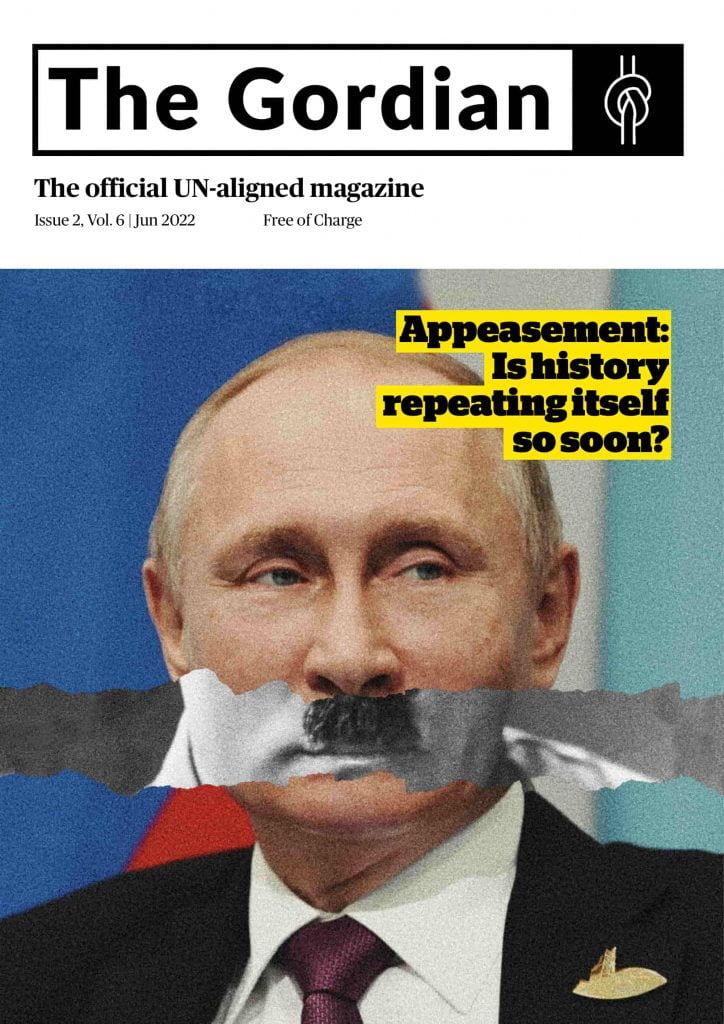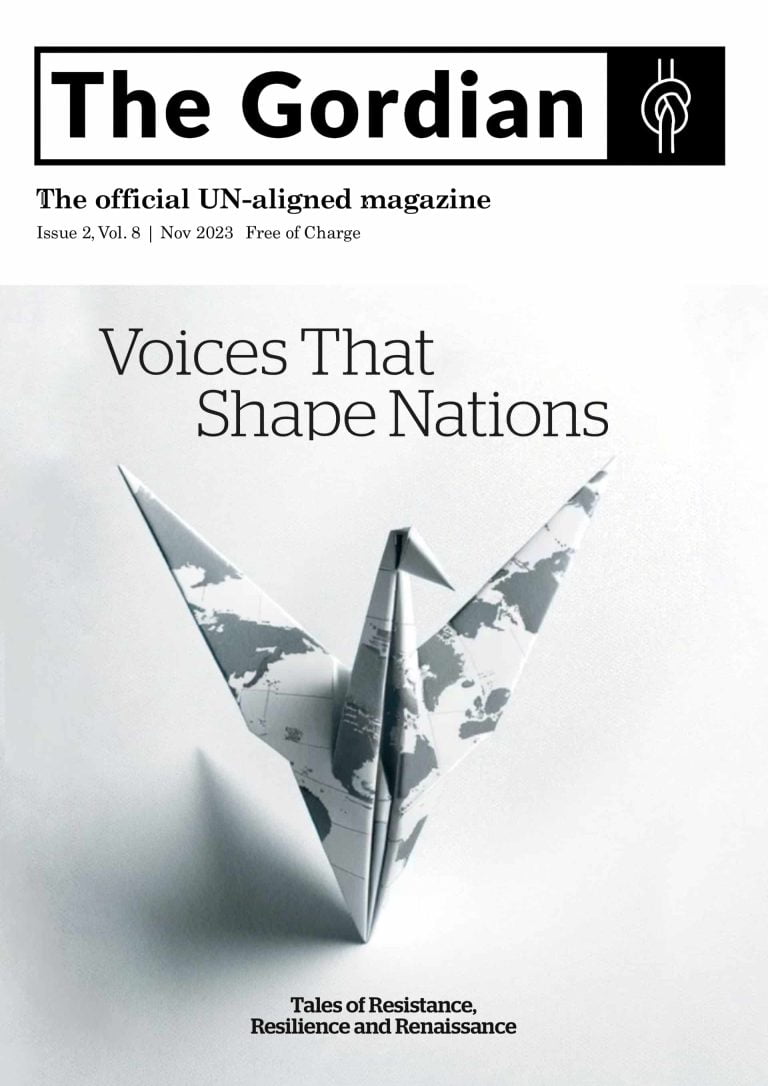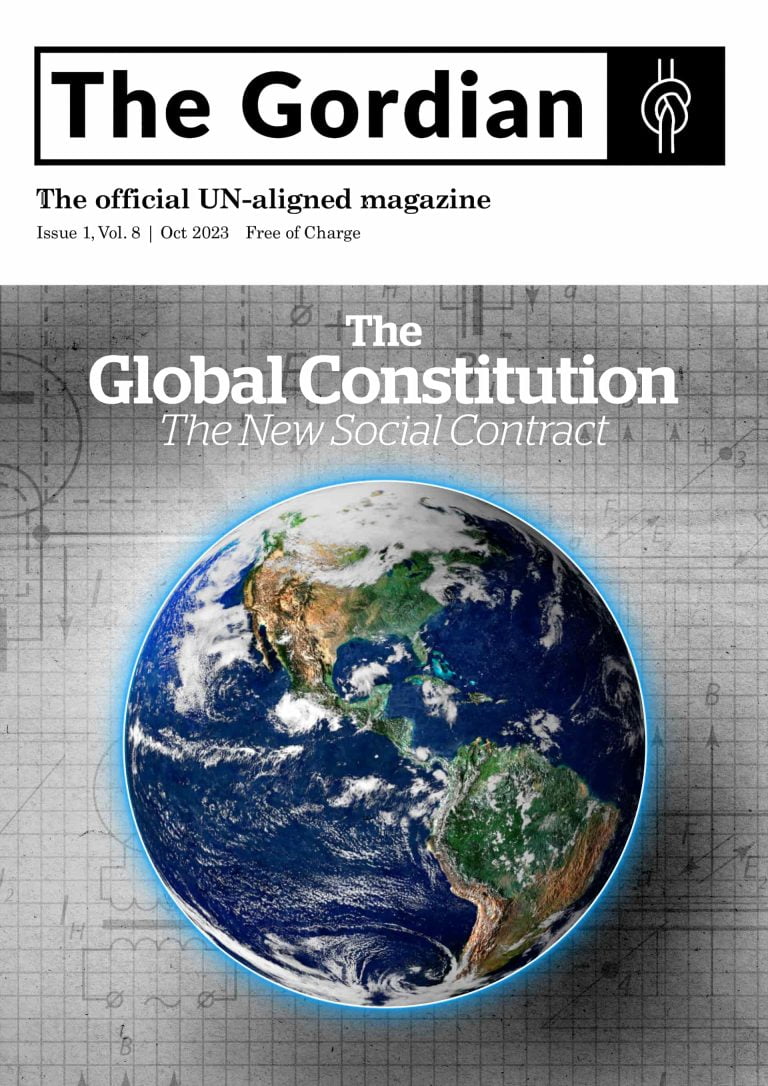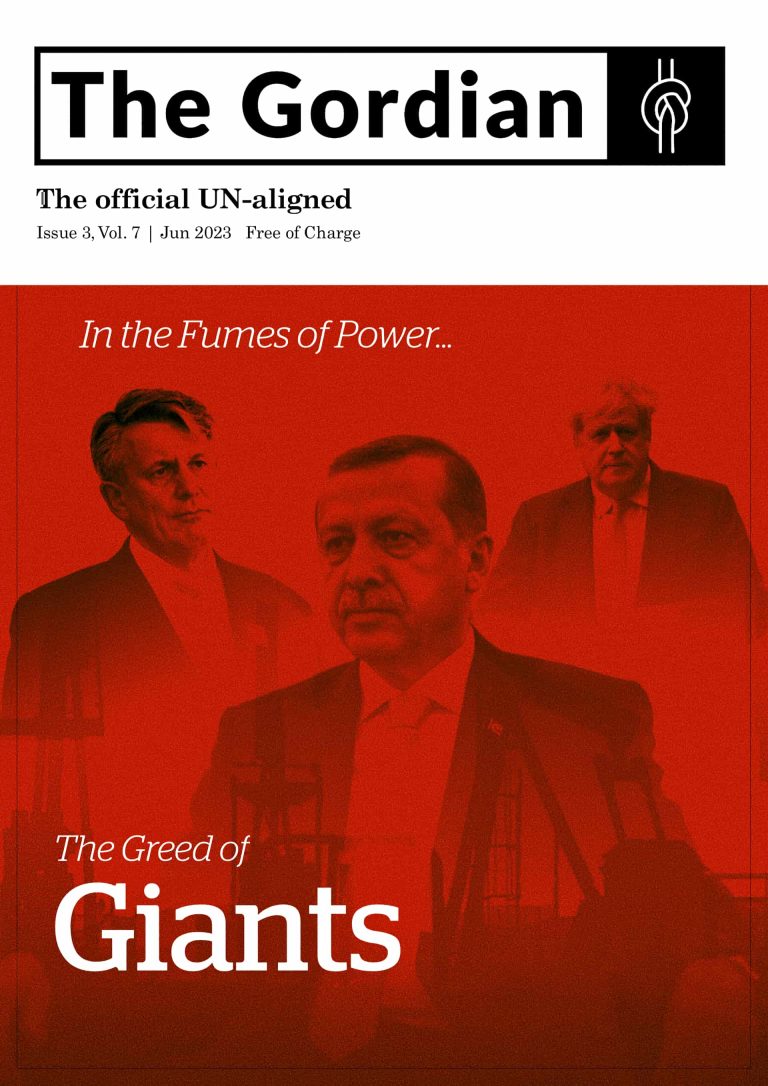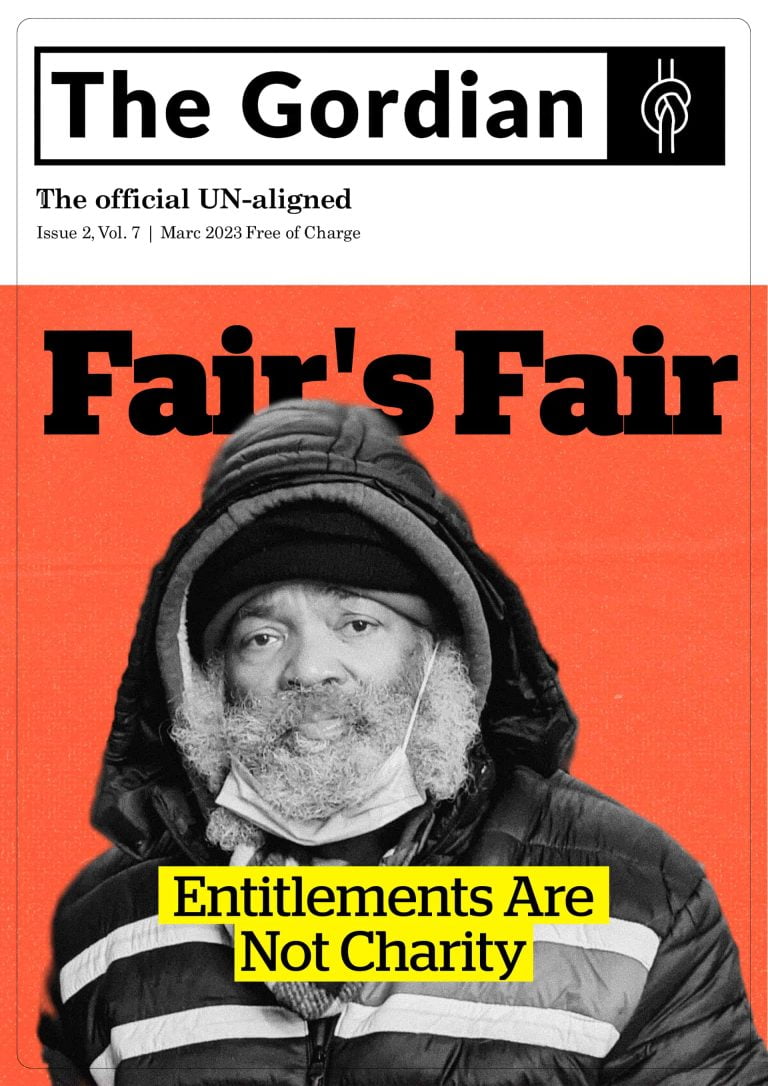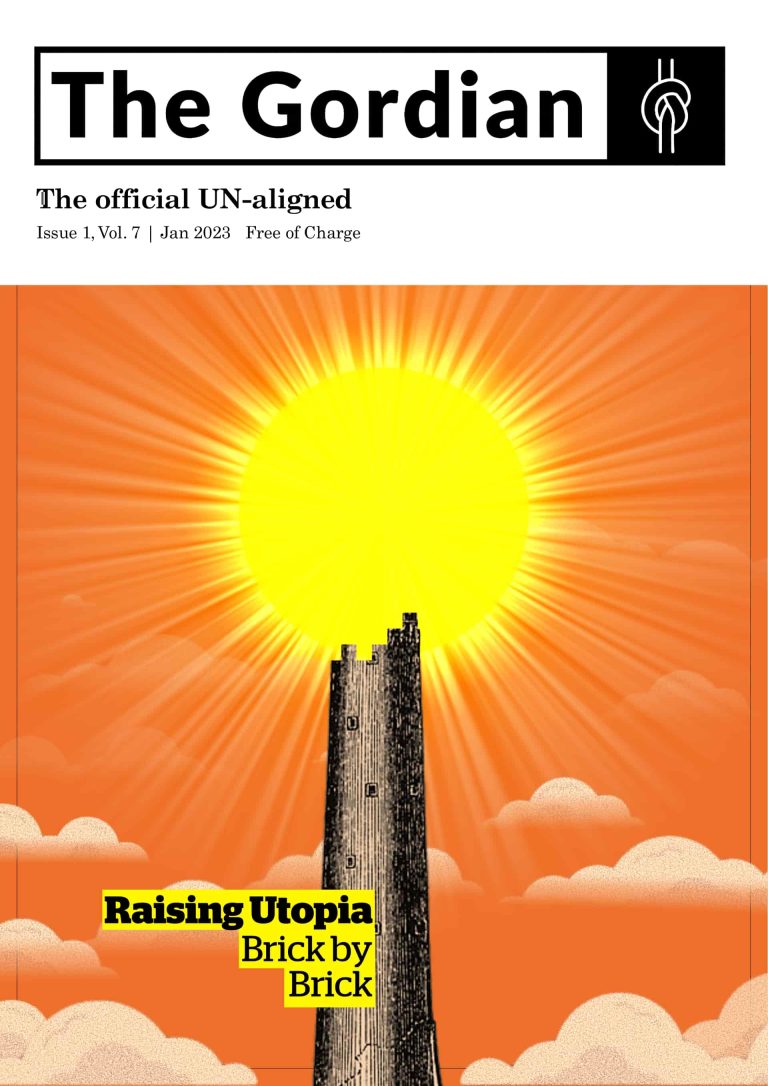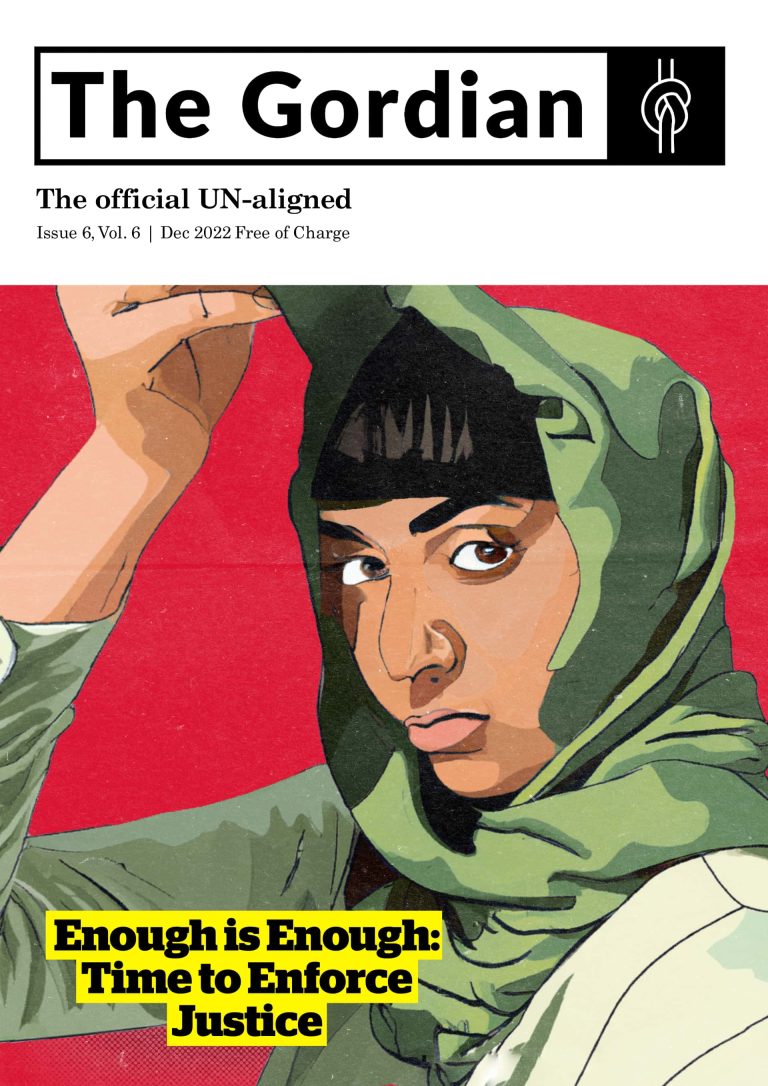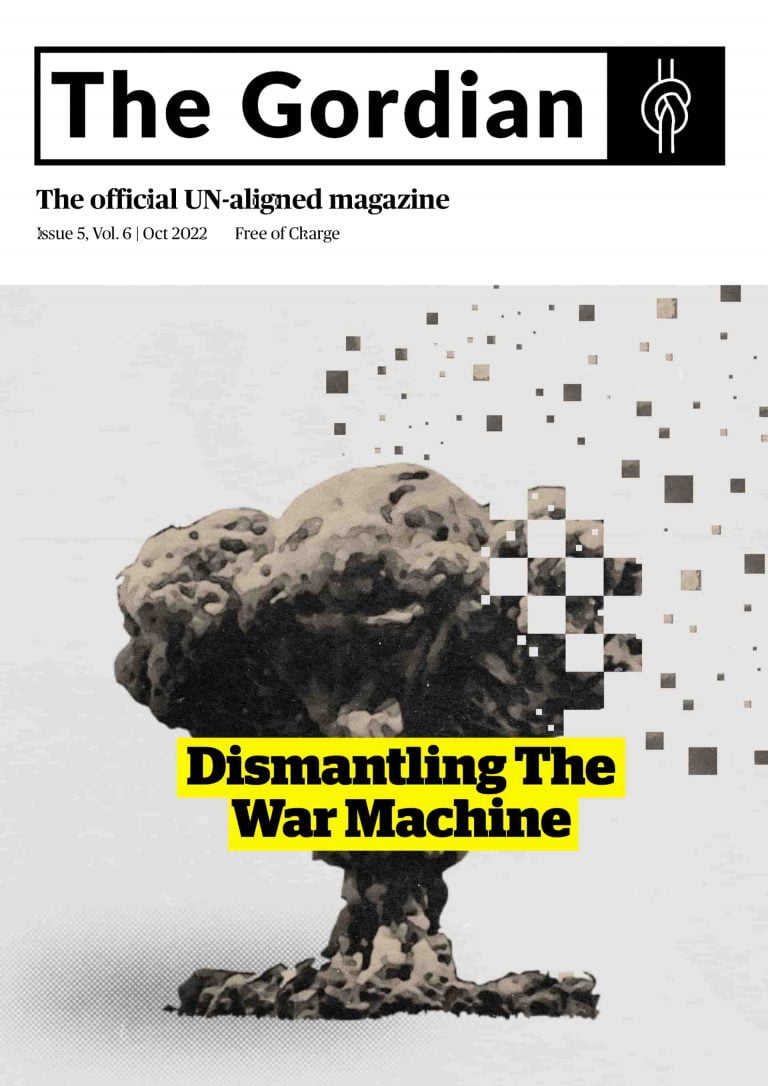Letter from the editors
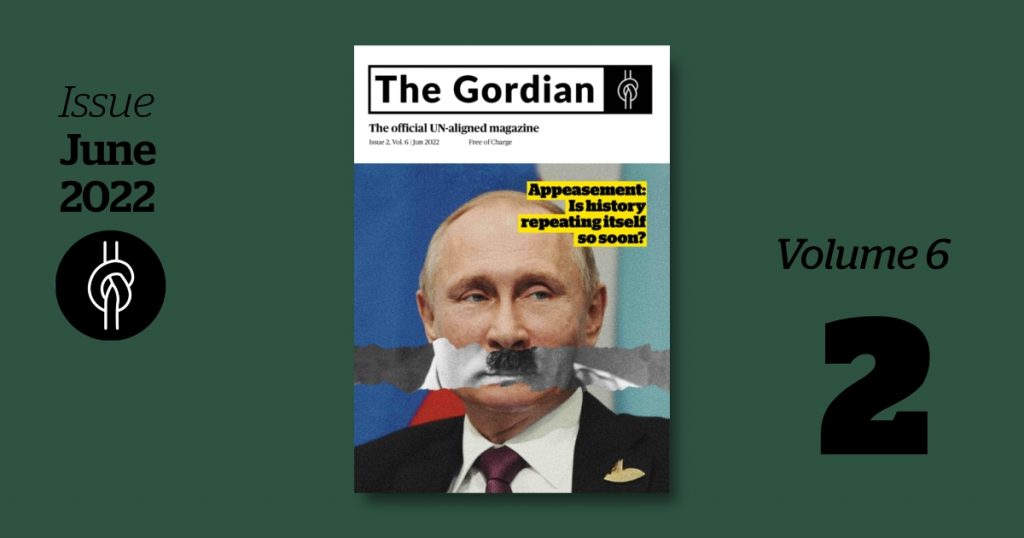
Another month and another warm welcome to a new issue of The Gordian.
In keeping with our theme for this series on justice, we will be focusing on appeasement. Apart from the article about forfeiting somebody else’s justice that tackles appeasement head on, the issue is also highlighted in our articles in the UN in Focus section and alluded to elsewhere, including the campaign we have been working on over the last few months, namely, trying to bar countries that criminalise LGBTQ+ rights from being given seats at the United Nations Human Rights Council. We can proudly announce that the letter has been sent to the UN to coincide with Pride Month and it has been supported by the many signatures of organisations and individuals alike.
Of course, we also offer the usual mix of articles from various writers, some personal and touching, like the final part of Noor’s story and the letter from a refugee camp, others socio-political, like the address to UN-aligned’s AGM, by the President of the Young World Federalists. Finally, you will find out regular features on art, literature, the environment and general knowledge. Enjoy!
We hope you enjoy all the upcoming stories that we will be sharing with you.
If you are in a position to financially support the magazine, we would greatly appreciate your generosity. Every contribution, whether big or small, means we can keep investigating and exploring solutions to critical issues of our time; and it only takes a minute. Support the Gordian Magazine with a Patreon subscription.
Adrian Liberto and Ariana Yekrangi are the Editors of The Gordian Magazine.
“Allowing countries that criminalise homosexuality on the UNHRC is against the Declaration of Human Rights” — President of the Council told
By Ariana Yekrangi
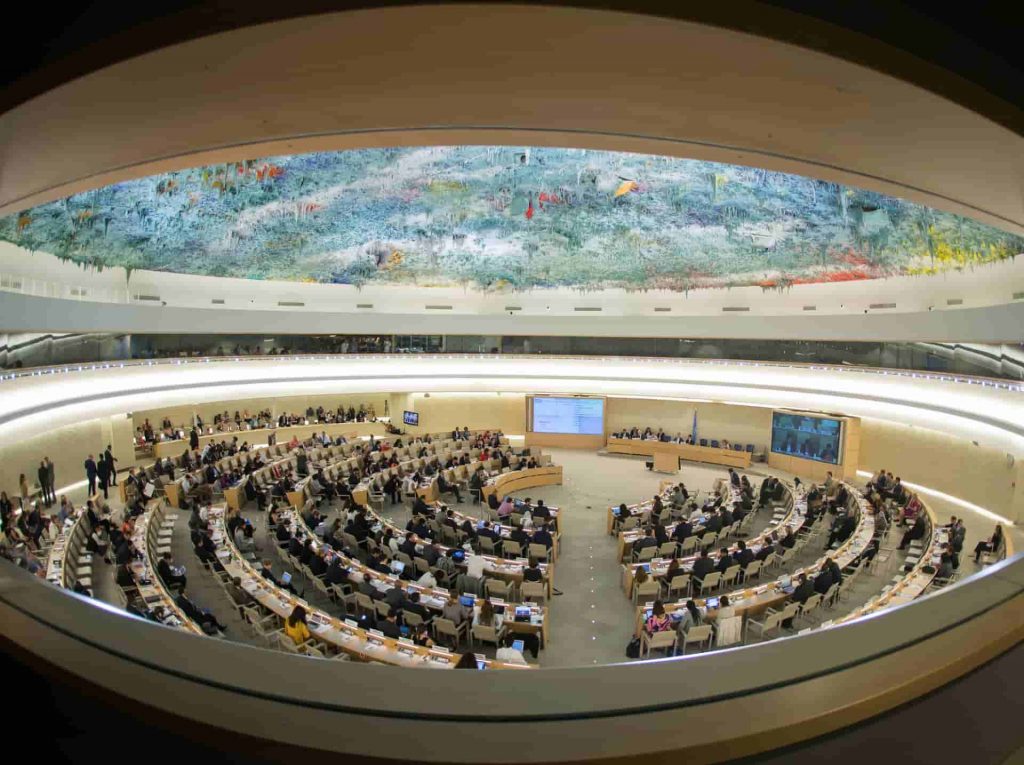
In celebration of Pride Month, UN-aligned and more than 15 NGOs sent an open letter to the president of the United Nations Human Rights Council, Federico Villegas, to “ban members who criminalise homosexuality from membership” and calls for the body “to make rescinding such discriminatory laws a precondition of membership to the UNHRC”.
The letter highlights that according to the UN Declaration of Human Rights, disregard for such abuses is unacceptable and therefore completely incompatible with the body’s mandate.
Currently of the UNHRC’s 47 members, over a dozen specifically criminalise homosexual acts.
The open letter acknowledges that implementing restrictions on UNHRC membership will take time, however, it seeks clarification on what arrangements the UN body is prepared to take in order to ensure that the nations entrusted with the promotion of human rights are not serial offenders themselves.
UN-aligned is an NGO based in Finland that works towards the creation of a better United Nations, one that is founded on clearer principles and that is free from the shackles that have undermined the current institution beyond any possibility of repair. Part of its brief is to promote human rights, animal welfare and environmental protection.
UN-aligned calls on UNHRC to block members that criminalise homosexuality — Letters
If, for any reason, you haven’t signed the campaign yet, please consider doing so immediately. Whether you agree with all of UN-aligned’s principles or not, is not the issue.
This is not about us, but about the UN’s failure to take its mandate seriously by cosying up to governments that flout basic human rights.
Monthly Recap: What you may have missed in May 2022
By Adrian Liberto
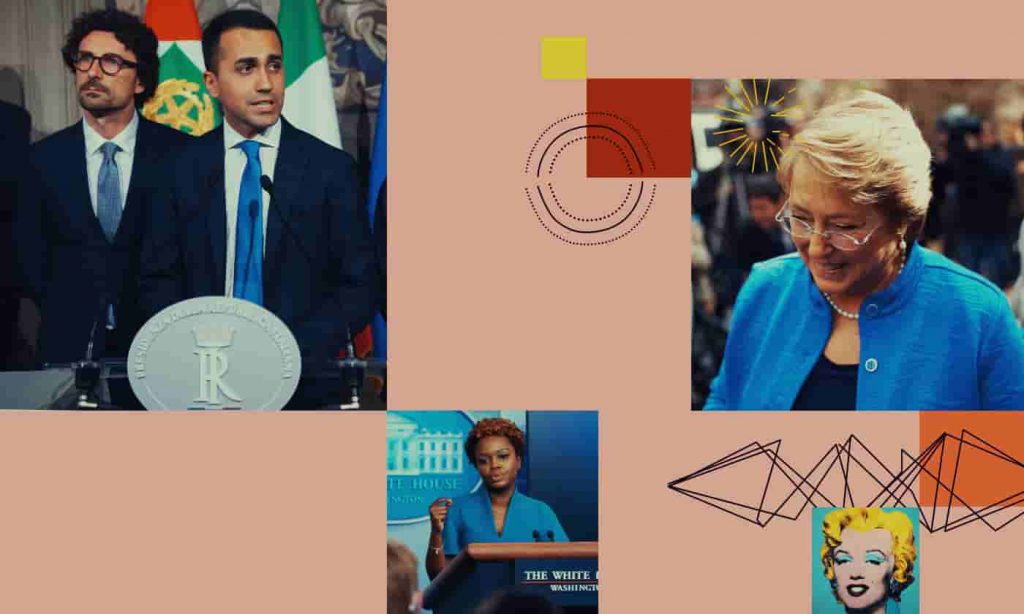
Quickly catch up with everything that you may have missed from last month.
Forfeiting Somebody Else’s Justice
By Adrian Liberto
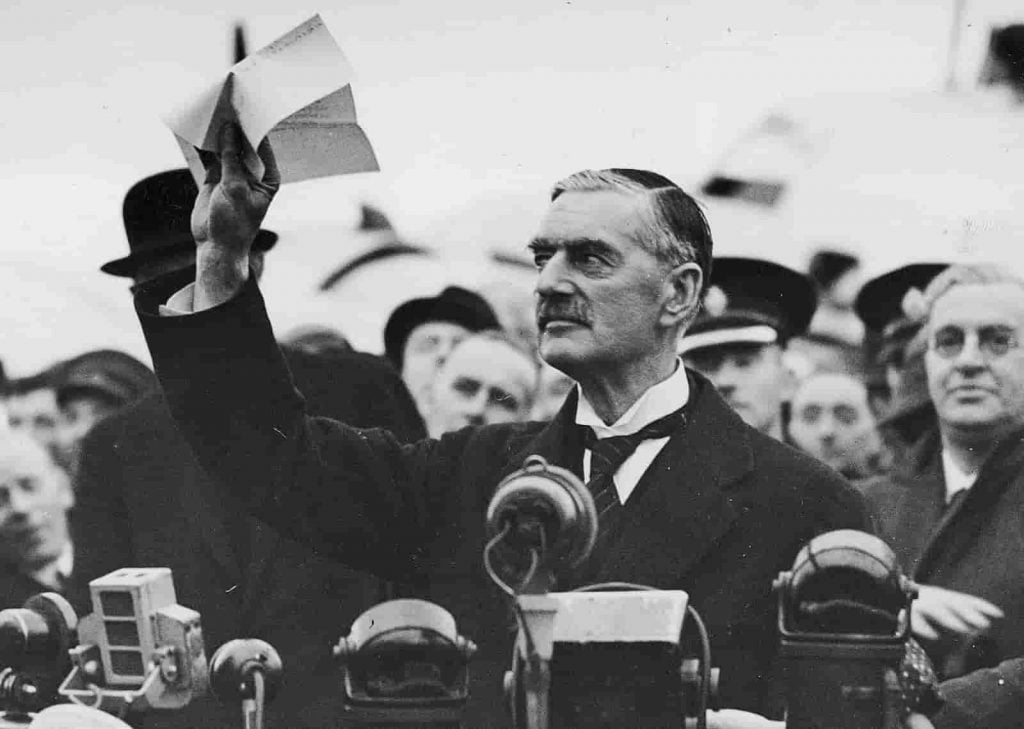
The Cost of Appeasement: somebody else’s justice
In general terms, appeasement is giving the school bully your lunch money in order to avoid being beaten up. In political terms, however, it is more like giving the school bully someone else’s lunch money, to stop them from being picked on, because we just cannot be bothered to deal with the confrontation.
Although this may come across as helping, it is in actual fact the exact opposite of that because it perpetuates a mechanism of exploitation. The bully may tire of beating the same person for no tangible results, but they will never stop preying on them when their threats reap handsome rewards. Sometimes, therefore, peace negotiators are more of a problem than a solution. This is big-boy politics that treats smaller nations like pawns that can and often are compromised for the bigger picture, which is the status quo for the power brokers.
The seasoned 99-year-old American diplomat, Henry Kissinger, attending this year’s World Economic Forum at Davos, summed up this mentality when he proposed letting Moscow get away with territorial gains in Ukraine in the name of long-term peace. This view is mirrored by many politicians and much of the world press. Countries, like France and Italy are also coming across as wishy-washy players that care more about a quiet life than facing injustice head on.
Appeasement Ukraine: Italy’s spineless proposal
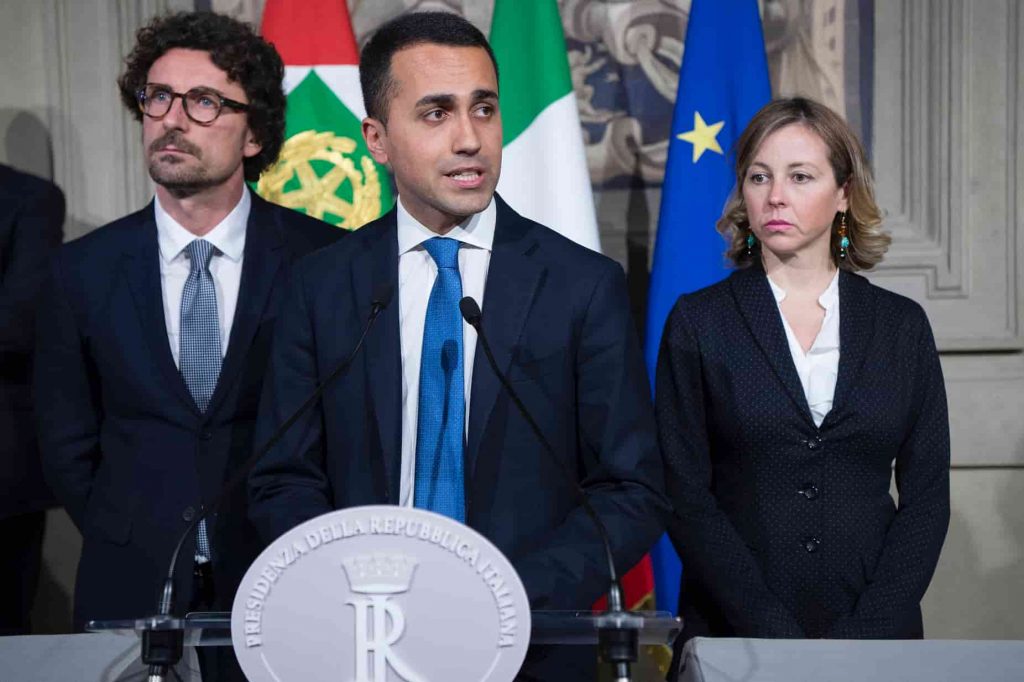
On May 20, Italian Foreign Minister Luigi Di Maio boasted about a peace plan for Ukraine that Italy had presented to the United Nations and that, he claimed, created the conditions for “a long-lasting peace”. The four-point plan is nothing less than capitulation.
The first step, which calls for a cease-fire and the demilitarisation of front lines would have been fair enough, were Russia to be trusted. Clearly, Putin cannot be, and for Ukraine to demilitarise its borders would be reckless, if not suicidal. The next three points, however, are not even more outrageous.
As the saying goes: Fool me once: shame on you; fool me twice: shame on me!
The second point calls for Ukraine to be a neutral country. This, with the backdrop of Finland and Sweden abandoning their long-held neutrality and formally requesting NATO membership because of Russia having gone completely rogue. How dare Italy suggest that Ukraine should not be free to choose its own allies? Moreover, this point suggests that Ukraine’s security would then be guaranteed by a not-as-yet- identified group of countries. Has Italy already forgotten the December 5, 1994 Budapest Memorandum whereby Britain and the United States, as well as Russia, had committed to upholding Ukraine’s security in exchange for it giving up its nuclear weapons?
The third point would give Ukraine nominal control over Crimea and Donbas, while in effect giving the regions almost complete autonomy, including with issues regarding defence. So yes, while Ukraine would not be allowed to decide how to proceed with its security alliances, it seems that Crimea and Donbas would be. Russia has already held Crimea since 2014, Russifying and brainwashing it, and it has been paving the way for a referendum in the Donbas with ruthless zeal, so unless these areas are allowed to revert back to what they were before Russian interference, Russia’s hold will ensure they will become its puppet states, just as Abkhazia, South Ossetia and Transnistria are. Moreover, what gives Russia or any other country the right to decide how Ukraine should be governed? How would Italy feel if a foreign state started advocating for Sicily and Sardinia to be mostly autonomous?
The final point would see the winding down of sanctions in pace with a staged withdrawal of Russian troops from Ukraine. In other words, all is forgiven, while Russia has Ukraine exactly where it wants it. Well, not exactly, as it would have happily erased it from the face of the earth, but at least cowering under its shadow.
Such a plan can expect a no better reaction from Ukraine than the Russian ship got when demanding the surrender of Snake Island: “Go fuck yourself!”
Appeasement examples
The term ‘appeasement’ often brings to mind the prelude to WWII, a time when, in the name of peace, Hitler was being allowed to threaten, intimidate and torment. We all know how that story ended.
However, appeasement can be more subtle than that and it often comes disguised as high-level diplomacy. At times, these so-called diplomats become collaborators and actual accomplices. Actually, it is not just diplomats and politicians; company executives, religious leaders and even human rights activists may fall into the trap; all in the name of dialogue and peace.
In my article on justice, last month, I pointed out how less than half of the States of the United Nations voted to exclude the Russian Federation from the Human Rights Council. The vote passed anyway because of abstentions and absences, but the numbers clearly showed how most countries were not prepared to ruffle Putin.
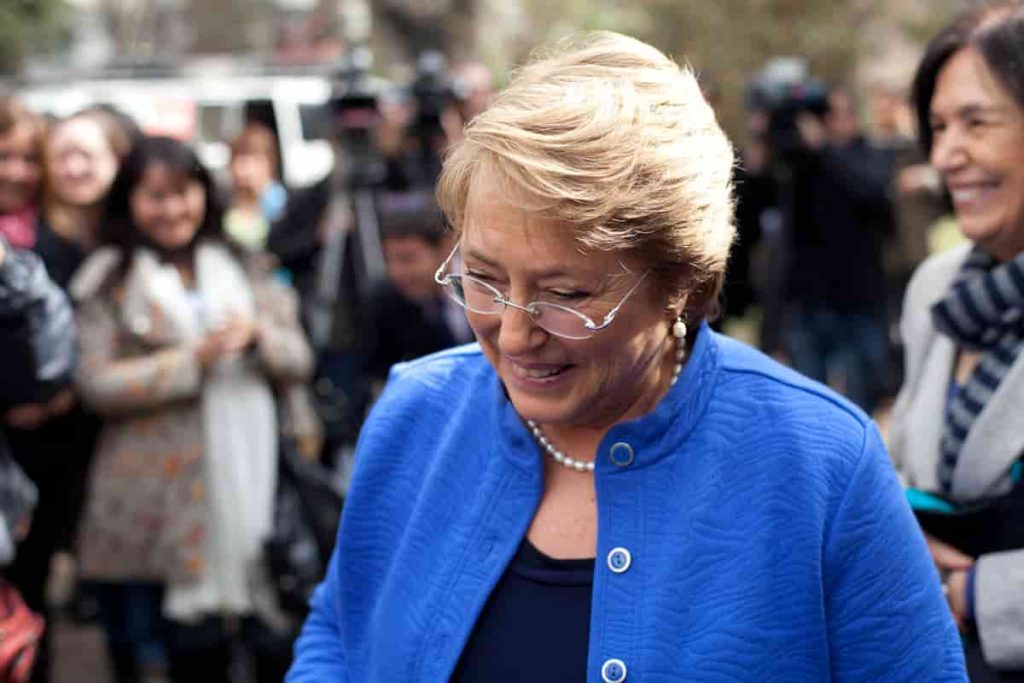
Similar pussyfooting takes place around China and its human rights abuses (see the UN in Focus piece on Michelle Bachelet’s six-day visit to China, for instance) and the US and its pet ally, Israel. The latter’s brutal repression of Palestinians over the last few months culminated with the coldblooded shooting of Al Jazira journalist Shireen Abu Akleh on May 11 and yet the response by America and its allies was muted as this apartheid State continues to be treated with deference.
Often, as in the aforementioned example, the motive behind glossing over, or turning a blind eye to, illegal and unacceptable practices is less subtle; sometimes it is even brazenly blatant. Trump’s feting of Saudi Crown Prince Mohammed bin Salman, shortly after the murder of Washington Post journalist Jamal Khashoggi on 2 October 2018, for which bin Salman was no doubt responsible, is such an example.
Bob Woodward’s book, Rage, even quotes the then US President boasting that he “saved his ass” by pressuring Congress “to leave him alone”. The reason for this cosying up to the ruthless bin Salman, which Trump was quite open about, was the $8.1 billion arms deal with Saudi Arabia, which incidentally was also against the backdrop of the kingdom’s indiscriminate bombing of Yemen. This said, Trump’s opportunism is far from unique in American politics.
In 2019, for instance, the United States sanctioned Venezuela heavily as the State Department condemned President Maduro for the “repression, corruption and mismanagement” that “generated one of the most dire humanitarian crises this hemisphere has seen.” Yet, in the wake of Russia’s invasion of Ukraine, the Biden administration sent several high-level government officials and Swiss diplomats to Venezuela to meet with its president in order to potentially lift the oil sanctions as a way of ending America’s reliance on Russian crude. Indeed, expediency is a powerful incentive for appeasement.
The United Nations and its policy of appeasement
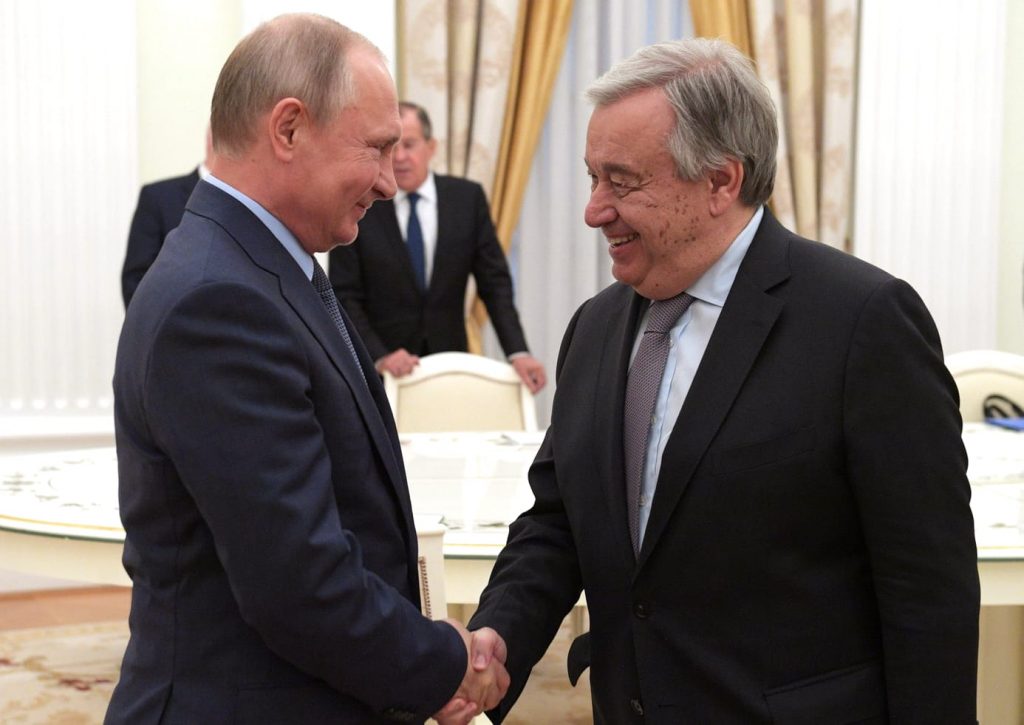
If the UN were a private company whose brief was world peace and the member states its shareholders, it would be an international joke, a scandal, an obscenity…
When it comes to appeasement in this wider sense, the United Nations is of course the prime offender. It gives serious and serial human rights offenders a voice, a seat and an aura of respectability and it tolerates whatever nonsense any despotic state wishes to advocate. This is appeasement at its worst because it is more insidious. The fact that the UN does not penalise human rights abusers or expel them from the organisation insinuates a philosophy of ethical relativism. If the UN were a private company whose brief was world peace and the member states its shareholders, it would be an international joke, a scandal, an obscenity… However, because we have become used to the UN putting up with any abuse by its members, we consider this acceptable. Well, it is not; and anyone who is not part of the solution is part of the problem. “These are the principles the United Nations upholds; stick by them or get out!” This is what the organisation should be saying to its Member States. Its failure to do so has become the pathetic appeasement we have come to accept with dire consequences.
So, no, appeasement is not a happy medium. It is cowardice disguised as flexibility. It is injustice. Appeasement is the message and invitation every bully wants to receive.
Michelle Bachelet’s visit to China: “Unacceptable” is a missing word from the UN’s arsenal
By Adrian Liberto
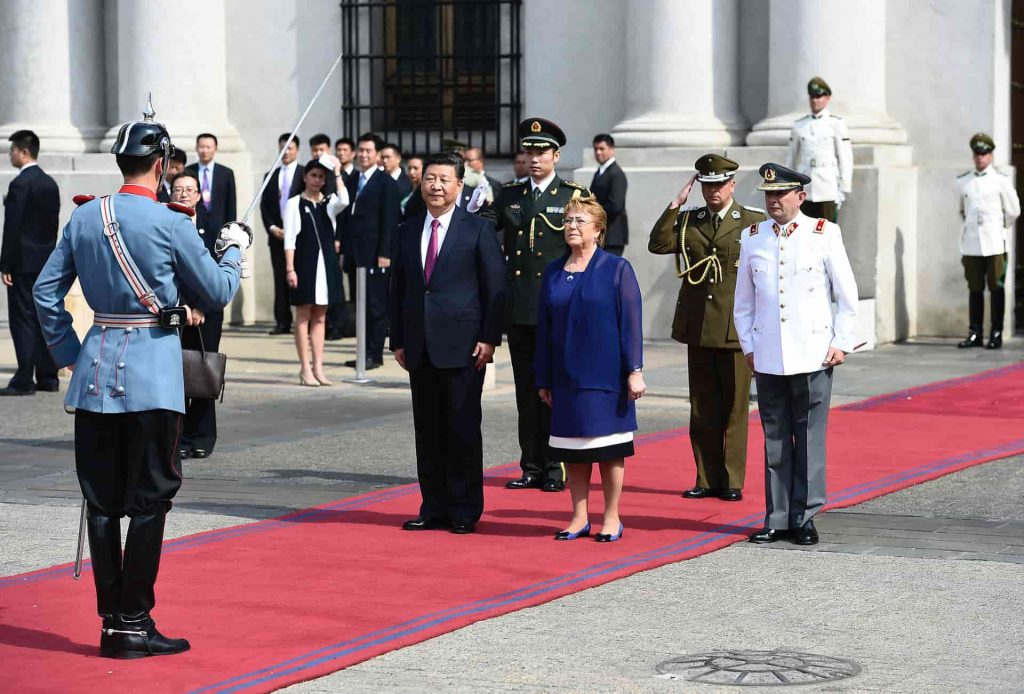
On May 28, Michelle Bachelet, the UN High Commissioner for Human Rights, ended a six-day official visit to China. The trip was controversial from the start as critics claimed it would gloss over Beijing’s human rights abuses. On May 29, the UN issued a press release aimed at addressing some of these concerns, particularly with regards to the crackdown on political freedoms in Hong Kong, the governance of Tibet and the treatment of the Uyghurs in Xinjiang.
Regarding the latter, the statement mentioned areas of concern raised by the Commissioner, such as “concerns” around the actions that were being taken by China “to counter-terrorism and radicalism” and questions about China’s implementation of “counter-terrorism and deradicalization measures under broad application” which were having an impact on the right of Uyghurs and other predominantly Muslim minorities”. The statement also said that: “Ms. Bachelet encouraged the Government to review all of its counter-terrorism and recapitalization policies to ensure they align with international human rights standards and are not applied in arbitrary and discriminatory ways.”
As for Honk Kong and Tibet, which the Commissioner recognised as “other parts of China”, Bachelet emphasised dialogue and participation.
Sadly, “concerns” is one of the strongest words in the United Nations’ arsenal, only a notch or two below “unacceptable”- its primary weapon – which, to no one’s surprise, was not used during this visit. It was precisely this predictable discretion, bordering on deference, that aroused the many objections to the trip, including criticism from the US government. There were also fears, which proved to be justified, that Beijing would promote the visit as a tacit endorsement of its methods.
It is a fact that since Xi Jinping became the leader of China, the country has taken a sinister turn for the worse with regards to a range of human rights. This is no secret. The leaked document highlighting abuses in Xinjiang that date back to 2018 (including a shoot-to-kill policy for anyone trying to escape the “re-education camps”) which was published by a consortium of media outlets during Bachelet’s visit, only underscored what was already common knowledge. Perhaps some victims of China’s authoritarian policies may be grateful for the little mercies coming from the United Nations; UN-aligned believes they deserve better.
WHO? Yes, Tedros Again!
By Adrian Liberto
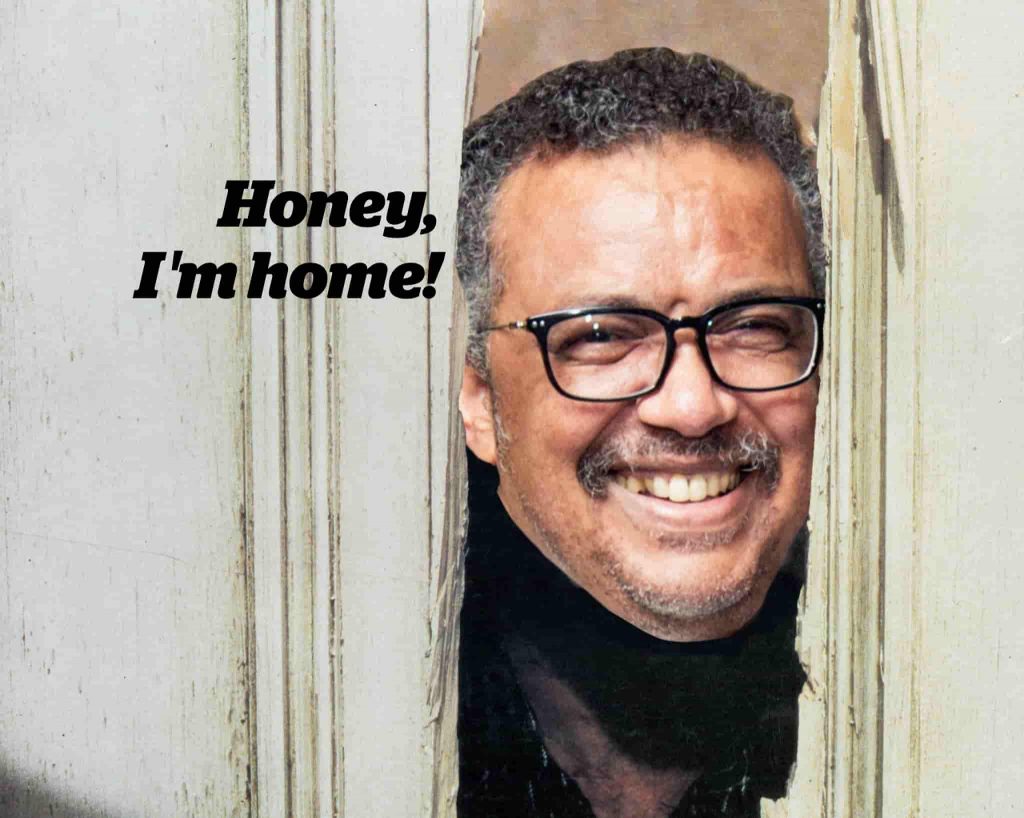
On May 24, 2022, Dr Tedros Adhanom Ghebreyesus was re-elected by the World Health Assembly to a second term as WHO Director-General. His renewed mandate officially starts on August 16. Dr Tedros’s experience includes field-level practice as a malariologist as well as political roles in Ethiopia, his country of origin, which included stints as Minister of Health and Minister of Foreign Affairs. This affiliation with a repressive regime that has been accused of torture, repression, and electoral fraud did not prove problematic enough to jeopardise his first election, which owed much to the support of China. It has even been suggested that Dr Tedros’s appointment of Zimbabwean President Mugabe as Goodwill Ambassador may have been done at the behest of China, although the gushing words that accompanied the nomination appear to have been his own, despite the well-known human rights abuses Mugabe was notorious for. Unsurprisingly, Mugabe’s tenure as Goodwill Ambassador for the agency did not last more than a few days.
The Chinese connection may have also been responsible for the lack of judgement Dr Tedros displayed towards the end of his first term. Not only did he praise China for its “transparency” in dealing with the coronavirus, which was blatantly untrue, he also allowed the organisation to drag its feet in declaring the COVID-19 outbreak a pandemic, even downplaying the virulence of the coronavirus. On February 26, when even by the organisation’s own estimates cases had surpassed 80,000 in almost 40 countries, Tedros claimed that “we are not witnessing sustained and intensive community transmission of this virus, and we are not witnessing large-scale severe disease or death.”
Needless to say, the WHO summed up the Director-General’s legacy so far in more glowing term:
“During his first term, Dr Tedros instituted a wide-ranging Transformation of the WHO, aimed at increasing the Organization’s efficiency driving impact at country level to promote healthier lives, protect more people in emergencies and increase equitable access to health. He also guided WHO’s response to the COVID-19 pandemic, outbreaks of Ebola in the Democratic Republic of the Congo, and the health impacts of multiple other humanitarian crises.
Despite our advances in the sciences, our reckless abuse of animals and the environment is likely to increase the onset of health crises. At times like these we need uncompromised leadership and sound judgement, anything less spells betrayal and danger.
The hidden curse of Babel: The drawbacks of language as a means communication and thought
By Adrian Liberto
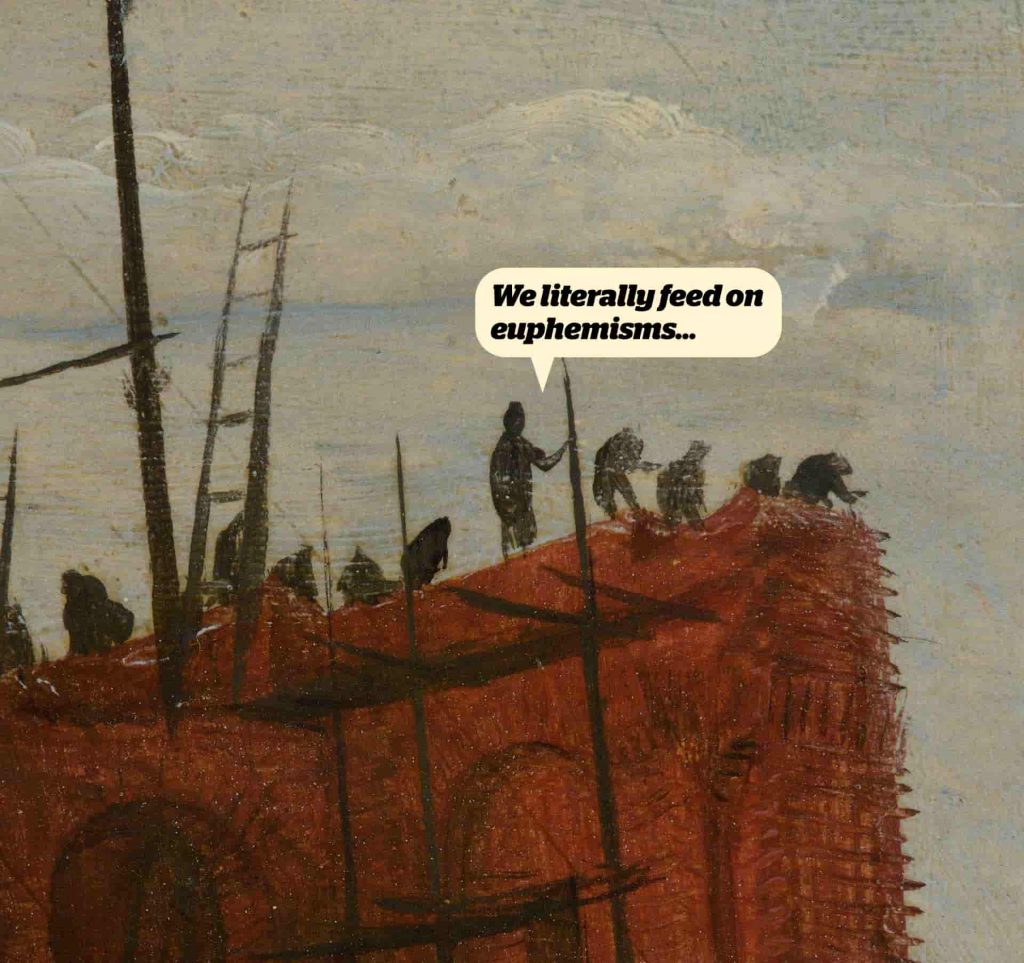
The biblical story of the Tower of Babel portrays God rather like the trickster Loki, more intent on mischief, than promoting harmony. Surveying the city and the tower that the descendants of Noah had started to build in order to achieve a level of security and prestige, God says: “If as one people, all sharing a common language they have begun to do this, then nothing they plan to do will be beyond them. Come, let’s go down and confuse their language so they won’t be able to understand each other.” (Genesis 11: 6-7) The final touch was scattering the people all over the world. (Genesis 11:8)
So there you have it: according to this account, our different languages are a curse, as is nationhood. Of course, the likely intention of the author was to justify a fait accompli, rather than to depict God as opposed to universal communication and unity. However, all things considered, languages and nationhood can be a bane; each in so many different ways.
The focus of the story of the Tower of Babel is language, at least it is in the popular imagination, and it will also be my focus in this article. My intention is to highlight the drawbacks of language, not only in its cursed post-Babel scattered metamorphosis (or polymorphosis), but also in itself, as a means to communication and thought.
Language per se
Language gives us wings made of multicoloured feathers, but every feather adds a heavy link to that chain that is the price of those wings. Most of us take language for granted. We use language to communicate and we use language to think: both uses have their pitfalls.
Communicating with language
When we use language to communicate, we give words an almost divine prerogative. If the word for what it is we wish to express does not exist, we can use other words to describe it. Even if speaking with someone who does not share a common language with us, we still resort to words, though much may be lost in the translation. Body language helps, particularly if we are aiming to relay emotions, but ultimately, words are the gods we worship. This rigidity to the spoken word makes automatons of us all. Sometimes brilliant and outstanding automatons, but automatons, nonetheless. If this were not the case, we would be able to reach out beyond words. Putin’s soldiers would see beyond his branding of innocent people as Nazis. This Big Lie, borrowed from the Nazis with such bitter irony, would be exposed because the words would just not stick.
People who slaughter animals, or happily pay others to do so, would be able to understand what the pig, cow or chicken are saying when they struggle to survive or to save their young or friends, though they cannot use words as such; a fish, even, wriggling and gasping for breath. The butcher shop, with its prized home-grown joints would be a morgue full of murdered corpses deftly mutilated for putrid morsels of carrion. The facts are the same, only the lustre of the words is different.
We literally feed on euphemisms
The same goes for society’s changing taboos which often come with vile and salient words. Yes, we tyrannise with words and let words blind us to what lies beyond. They condition us as powerfully as Pavlov’s bells and like all good things, they are quite dangerous when abused.
Also, if we were not so conditioned, we would see borders for what they really are: lines drawn on dry sand on a windy day. When laws are fair and respected, borders mean little. The EU is proving that, although of course its collective laws are far from perfect. So if we want to benefit from words, whilst being free from their tyranny, we must always be a few steps ahead of them and prioritise the concept, of which they are merely the messengers. After all, occasionally, messengers lie.
Using language to think
In some ways, words are even more insidious when related to thought. This is because, unless we learn how to transcend them, they literally become a programme to which we are entirely bound. Indeed, they do work; just as the survival mechanism within an ant colony works, but evolution or self-development would be very slow, or even impossible in such a context. If we learn to let go of words, even if only occasionally, we will find that we can go much further; a bit like swimming without the armbands that helped keep us afloat. This is one of the reasons why many mystics put so much emphasis on meditation. Releasing ourselves from words opens up new potential. The Tao master, Chuang Tzu expressed this idea beautifully:
“The purpose of a fish trap is to catch fish, and when the fish are caught the trap is forgotten. The purpose of a rabbit snare is to catch rabbits. When the rabbits are caught, the snare is forgotten. The purpose of the word is to convey ideas. When the ideas are grasped, the words are forgotten. Where can I find a man who has forgotten words? He is the one I would like to talk to.”
The curse of different languages
Nowadays, there are over 7,000 languages spoken worldwide. Each one carries its own particular cultural twists. Italian, for instance, has words for pasta that is over cooked (scotta) or food that has not got enough salt (sciapa), highlighting the importance Italians place on culinary delights. However, they do not have a word for ‘privacy’; which is perhaps not that surprising when one thinks of the toilets of ancient Rome.

All these languages form a rich cultural heritage and we should do all we can to preserve each and every one of them. Sadly, many only have a few speakers left and are rapidly becoming extinct. Every year a few are lost and this year we have already lost one: Yahgan, which was spoken in Chile’s Tierra del Fuego. This said, the downside cannot be overlooked, namely the fact that the lack of a lingua franca for all nations and races results in serious communication problems. UN-aligned proposes to have English as a lingua franca that can be taught as a second or other language all around the world. Whilst English may not be the most widely spoken native language (that privilege goes to Chinese, with Hindi and Spanish high on the list) it is the language with the most speakers overall. Teaching English as a first or other language in all schools around the world would facilitate communication and promote understanding. As the biblical account says, with a common language and a common goal “nothing” people “plan to do will be beyond them”.
Power loves the status quo
The purity of language and its ability to evolve freely is a matter of justice. This is more than just a matter of freedom of speech or about words that relate to our individual human rights, such as labels and pronouns. It is about truth. I am not referring to the blatant lies many politicians love to indulge in, particularly before a general election or an assault on civil liberties. I am talking about an accepted nomenclature that is based on deceit. So let us redefine a few words as an example.
1. Immigrant: Someone who is exercising their right to settle where they please.
2. Meat: Flesh in an early state of decomposition that belonged to an individual who was captive, abused and finally murdered.
3. Religion: A belief, shared by many, which often becomes a tyranny towards those who do not share the same belief.
4. Marriage: A social contract that is bound to the arbitrary laws of the land.
5. War: A convention that allows people to kill each other and anyone who gets in their way, and to cause havoc and destruction. A war crime is something that further legitimises the above by identifying only certain extreme atrocities as unlawful.
6. Circumcision: Removing the foreskin of a penis and an almost universally accepted form of child abuse when the decision to perform this is imposed on boys unnecessarily, thereby mutilating them and reducing their full potential for sexual pleasure.
7. Border: A convention that often allows governments and people to treat people on the other side of an imaginary line as inferior and less worthy of compassion.
8. Soldier: A person whose country gives them permission to kill and destroy in the context of war (see above), as opposed to a defender (to which the term is often incorrectly applied) or a police officer.
9. Terrorist: Someone who perpetrates or promotes terror. As an adjective it can apply to many of the United Nations member states and to organisations, as well as to people.
10. The economy: The intricate web of dealings that often make the rich richer and the poor poorer and to which most governments would sacrifice all decency and honour.
In conclusion, then, do not let words be your master because it is you who should be fully responsible for them and if you understand their magic, they can be veritable incantations for a brighter world.
“All of the anger poured out of me like a volcano and I saw red” — My life as a Moroccan child immigrant in 70s England (Part 3)
As told to Ruby Goldenberg
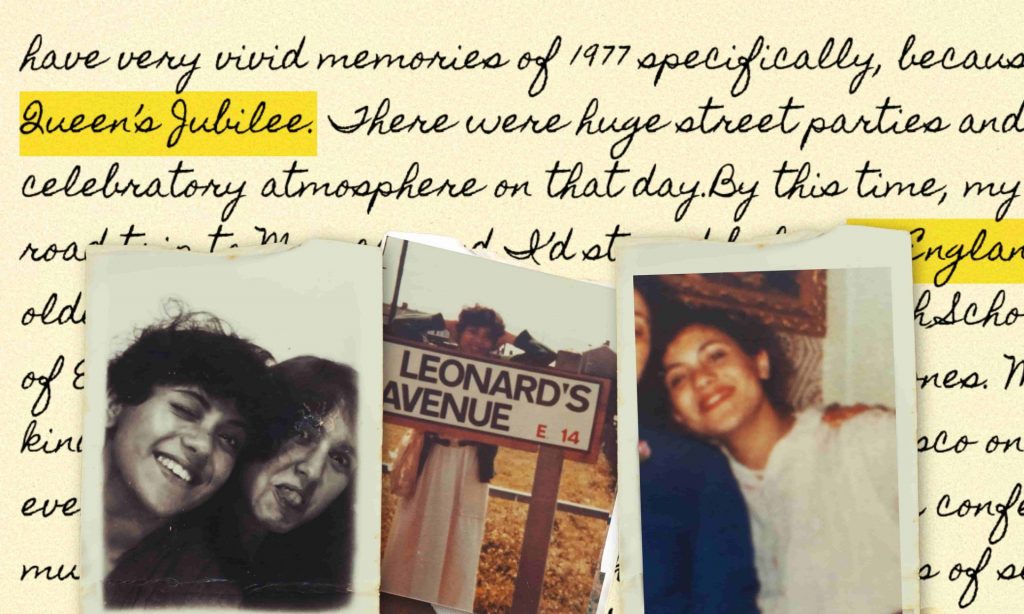
This is the third and final part of Noor’s story for this feature. Noor is sharing her experience as an immigrant child who came to England in the 70s from Morocco. At the time, Noor was still grappling with the English language and finding her place in High School.
I have very vivid memories of 1977 specifically, because it was the Queen’s Jubilee. There were huge street parties and a pure celebratory atmosphere on that day.By this time, my mum was on a road trip to Morocco and I’d stayed behind in England with my older sister.
I set off on my last years of High School to the sound of Elvis, the BeeGees, Abba and The Rolling Stones. My school very kindly indulged us in this phase by putting a disco on in the hall every week, we would go to the disco but never confessed to our mum where we were going!
The next two years of secondary school were spent in a different location called ‘The Annexe’. Going to the new place was very daunting and it did feel like starting school all over again. Once again, I was faced with a different, grand Victorian building.
Inside The Annexe, the Art and Needlework studios were well equipped; I really bloomed in Needlework class and my garments would be displayed on the wall. Unfortunately, my needlework teacher thought me a nuisance, because I worked too fast and would finish before the other kids. To bide more time my teacher would make me unpick my completed work and do it again.
The Geography lessons consisted of my teacher writing on the blackboard, and we only ever had to copy down the words nicely, and quietly for the whole lesson. It was a very tedious subject and I don’t remember learning anything significant.
No, what would you really like to do?
We had a music teacher who spent the hour talking about his life and his experiences. He would sit at the piano for the whole lesson yet we would be lucky to hear from him a note or two! He much preferred to just talk at us about anything else except teaching music. Every so often there were career interviews, where we’d be asked by a career advisor one-to-one “What would you like to be when you grow up?”I remember telling the advisor that I’d like to be a singer when I grow up, and he told me “No, what would you really like to do?”
Things had moved along socially at school, but there was still the occasional incident of bullying. One bully seemed particularly fixated on where I would buy my clothes from, I didn’t sense flattery in her asking, more of an unkind curiosity. After being asked the same questions about where my clothes were from day in and day out, eventually the girl snatched my skipping rope from my hands in the playground and hit me with it. I was taken aback but the bell rang and break time was over. At the end of school I began to walk home alone. I turned down the road away from school and found myself surrounded by a circle of 20 students, with me as the bullseye in the middle. The same girl from the playground also happened to be in the circle and had knocked me to the floor, and all I remember is her battering me. She was older, stronger and well versed in being a bully. I couldn’t even get off of the floor, my hair was being pulled out in strands between her fingers. She was kicking me and pulled my head up by my hair, preparing to smash my head into a wall. I realised that this altercation was about to get significantly more serious and reached my hand up to try to defend myself, my hand landed in the girl’s mouth and she bit down hard. I was able to use her mouth nonetheless to leverage myself away and to escape. The crowd of students were getting more and more excited, willing the fighting to go on and to “go for it!” I remember a lot of blood and needing to go to hospital, but what hurt the most was the burning humiliation and dent to my teenage pride.
The school brought my mum in to discuss the event, but since she did not speak much English, even with scars on my face and a bloodied hand, there was no one to advocate for me. I do not remember any further action being taken against the girl.
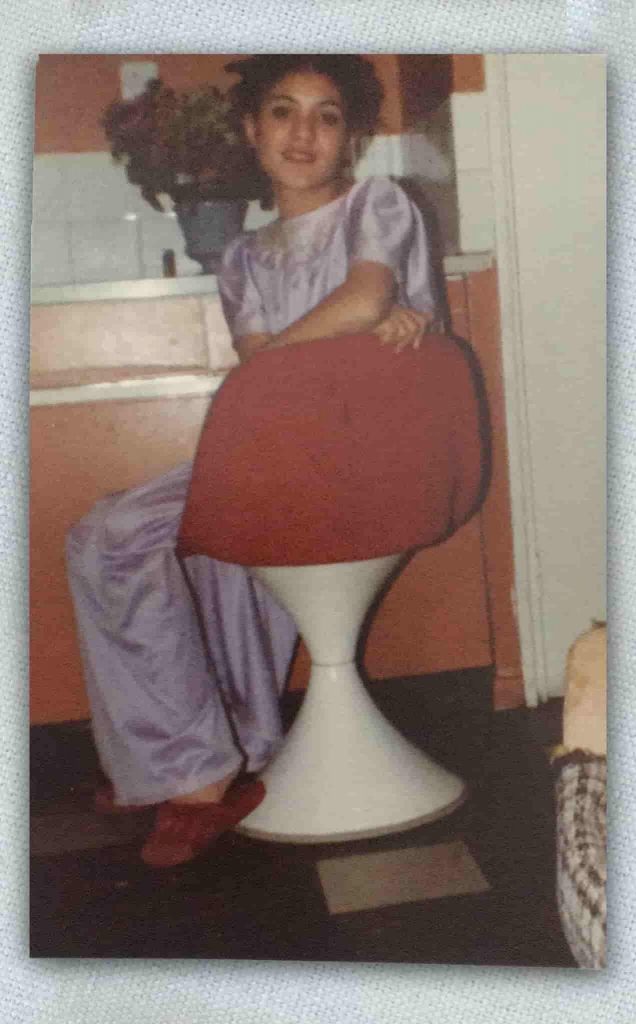
Unfortunately, this incident set something of a precedent, and a few weeks later I was looking for my ball in the playground and a girl approached me to ask what I was looking at- insinuating that I was looking at her and therefore asking for trouble. It later transpired that this was the friend of the first bully. I insisted that I was looking for my ball, but that didn’t matter, a target had been put on my back since losing the previous fight and I knew that it would continue unless I did something to change my story. I did not know this girl, we’d not had a conversation but she leapt for me! I remember thinking that I had to win this fight, or I could surely never come back to school out of shame. The crowd of students was a bit warmer to me this time. I remember them shouting my name and cheering me on to put up a fight. I was a bit more mentally prepared having replayed the fight from a few weeks previous over and over in my mind. All the anger and frustration from that fight poured out of me like lava from a volcano and I saw red. I sat on top of the girl and hit her as hard as I could, right on the face, over and over. A teacher approached and pulled me off. I was given the sternest talking to by the teacher and of course, I had no defence. I was rightly threatened with suspension, but luckily wasn’t suspended in the end.
About 20 years ago, I saw the first bully again in London, to my shock she saw me and said “What you lookin’ at?” just as her friend had done all those years ago! Then, 10 years later I saw the same bully again. She was in front of me at the post office, she was with her son and she noticed me. My eyes burned into the back of her head as she cashed her check from the government. I telepathically sent her a message “You don’t know what you did to me! Why did you attack me?!”
In the adult world John Lennon was shot, Lady Diana married Prince Charles and Margaret Thatcher was the first female prime minister of the UK. But, in my world I was consumed with school projects and friends, I just observed boys and was still afraid of them in any romantic capacity.
One day I badly twisted my ankle at school and was on crutches for a few weeks. While hobbling around at school several of my friends who were male had made a bet that if they offered to walk me home, and be generally helpful and attentive then surely one of them in turn would not receive my default answer to being invited out after school “Sorry I’m not allowed.” Unfortunately for all of them, my stance didn’t waiver.
I avoided the computers like the plague
In the last two years of Secondary school, I remember that a few rooms had computers suddenly pop up in them, but I avoided the computers like the plague. The day-to-day of my world was very much about being nervous of final exams and pouring in many hours of studying . My work was all lined up on my desk in an orderly fashion. I really began to love and be passionate about my studies. I was so immersed in school that I was blissfully unaware of what was going on in the wider world.
I completed my high school qualifications and ended up getting some really good grades. It was pretty remarkable for someone who started high school without speaking English. I then went on to complete O Levels at college, then my Bachelors at university in Education, then my Masters in Primary Education, and have since gone on to receive further diplomas.
My memories of my education in the UK in the 70s are immensely vivid. Retelling them has brought back to me warm memories and tough ones. The road to college was not smooth, but the good outweighed the bad. In becoming a primary school teacher in the UK myself, I felt that my journey of education in England had really come full circle. In some ways things had come a long way. In other ways, not much had changed since my time at school.
Going green in the transportation sector
By Partho Pratim Chatterjee
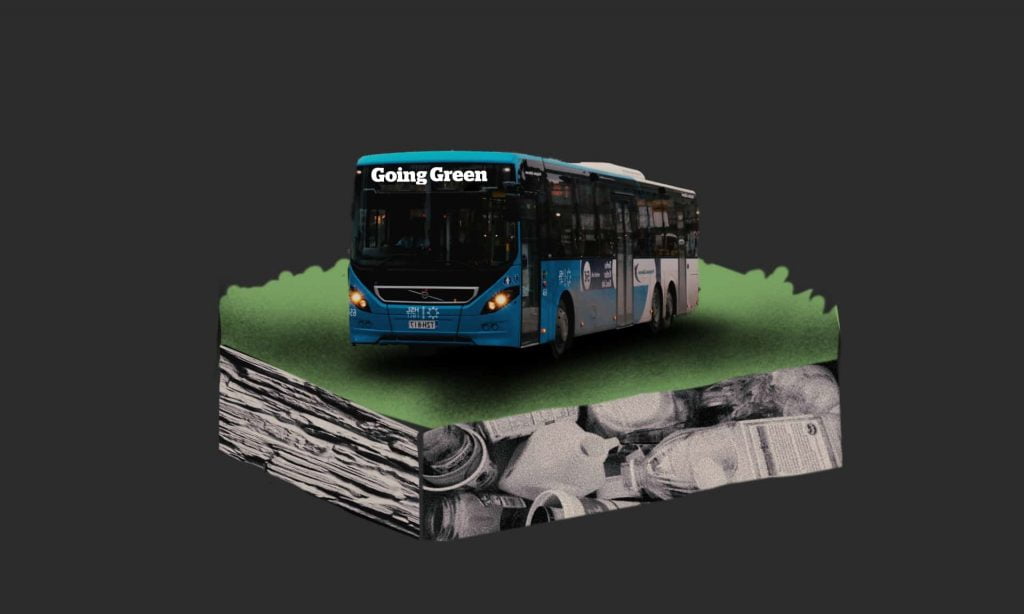
Pollution from transportation is an inexorable contributor towards climate change. Internal Combustion Engine (ICE) powered vehicles use fossil fuels like Compressed Natural Gas, Gasoline, Diesel etc. Here, an interesting trend is observed. The higher the hydrocarbon, the greater is the extent of pollution caused because of it. This could be attributed to the presence of a larger number of impurities in the liquid stage compared to the gaseous stage. Thus, the extent of environmental pollution caused by Diesel powered vehicles is greater than Natural Gas based vehicles. Further, the higher the hydrocarbon, the less smooth the combustion process becomes. This is because higher hydrocarbons like diesel tend to exist in a liquid state. Its combustion with air, which is a gas, is therefore not smooth. On the other hand, the combustion of lower hydrocarbons like natural gas (a gas) with air (also gaseous) is smoother. Apart from air pollution, ICE powered vehicles also contribute to thermal pollution and noise pollution. Tailpipe emissions from ICE vehicles have high temperatures. ICE vehicles have a large number of rotating components, like pistons, crankshafts, gears etc, which generate noise. ICE vehicles offer lower torque at low speeds.
To make the consumers aware of the polluting effects of these fuels, novel mechanisms like Star Rating of Fuels could be employed. For example, fuels which release greater amounts of pollutants like Carbon Dioxide, Nitrogen Oxides, Particulate Matter 2.5 could be given a lower rating. On the other hand, cleaner fuels like Compressed Natural Gas could be given a higher rating. These ratings could be displayed in retail outlets so that end users become cognizant of the pernicious effects of the fuels which they are using on the environment. Automobile owners could also be provided subsidies to convert polluting vehicles into cleaner ones.
The above mentioned disadvantages of ICE vehicles necessitate widespread usage of alternative clean transportation technologies. Let us now explore them one by one. Firstly, let us explore the realm of Battery Electric propulsion. Battery Electric (BE) propulsion offers interesting alternatives like fewer rotating components, greater efficiency, hassle free operation, zero tailpipe emission of pollutants, lesser noise pollution and lesser thermal pollution. The advantage with this mechanism is that torque and speed can be independently regulated using Variable Voltage Variable Frequency Drives (VVVFD). However, a major disadvantage associated with this propulsion mechanism is the inordinate time required to charge the battery and the low range offered per charge. This does not make Battery Electric Propulsion suitable for long distance travel and heavy duty applications like Trucks and Buses, particularly those operating in highways. To ameliorate this problem, mechanisms like Battery Swap could be deployed. Battery Swap Centers could charge batteries using clean energy sources like Solar energy, Wind Energy, Hydropower etc. Each Battery could be assigned a unique Radio Frequency Identification (RFID) code. This code could be scanned using scanners and the battery charging cost could be deducted directly from the person’s wallet. In this way, the waiting time could be reduced substantially.
Let us now explore Series Hybrid Vehicles (SHV). In series hybrid vehicles, a generator first converts the thermal energy of the fuel to electrical energy. This energy is then used to charge the battery and power electrical motors which are used to propel the vehicle forward. Mechanisms like Diesel- Electric propulsion should be avoided due to their deleterious effects on the environment. Cleaner Fuels like Green Hydrogen should be preferred. If the fuel is clean, say Green Hydrogen, pollution can be avoided. The advantage with this mechanism is the reduction in transmission losses. Further, Green Hydrogen or Green Ammonia could also be used to power fuel cells. The Direct Current emanating from Fuel Cells could be used to charge the batteries of the vehicle and then power the electrical motor of the vehicle via suitable electronic devices.
Let us now explore the clean technologies for heavy duty applications. Overhead Electric Cables (OEC) could power trains and vehicles plying in highways. Here, the length of the pantograph could be varied according to the height of the vehicle. This mechanism offers another interesting advantage. In this mechanism, high torque is available at low speeds. This makes this mechanism highly suitable for the transportation of heavy loads. In this mode, there is no range anxiety as the power source is available continuously. Further, the energy required to power these vehicles and trains could be sourced from clean energy sources to make this mode green in the real sense. Solar Panels could also be installed along highways and railway tracks to augment land use optimization.
Clean energy sources are inalienable in the modern era. To limit temperature rise by the end of the 21st century to less than 1.5 degree centigrade with respect to pre- industrial levels, clean fuels are a necessity. With the availability of apposite and techno-economically viable technologies, clean fuels could help achieve the objectives of the Paris Climate Agreement in Letter and Spirit.
A Day in Almoallem Refugee Camp
By Atika Harba
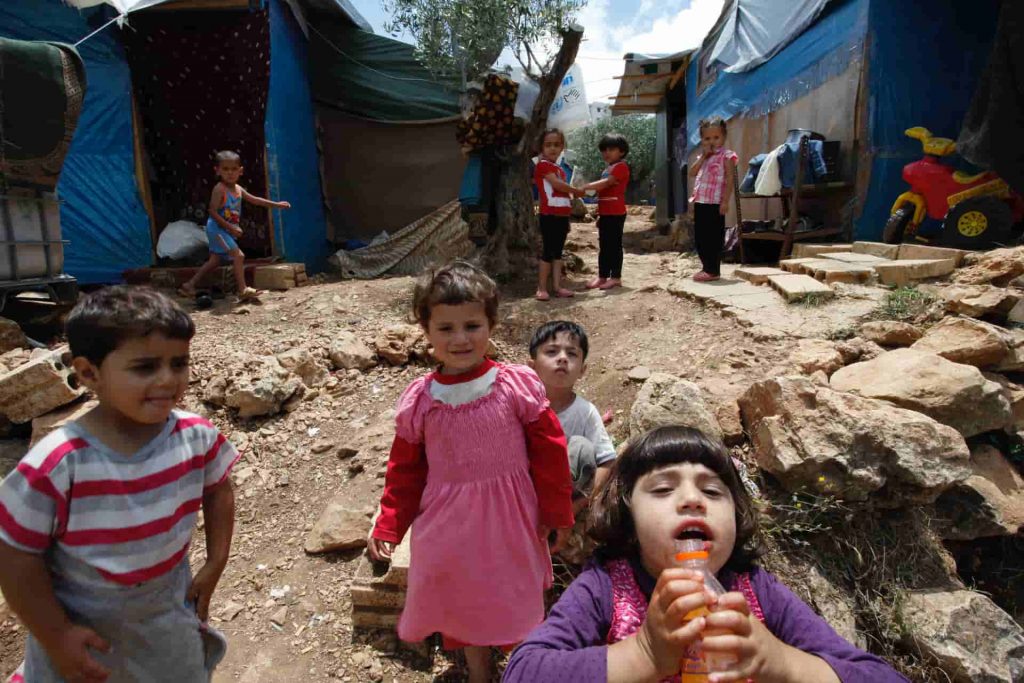
One day, my little sister and I were studying for the high school exams, so we were all sitting very quietly. Suddenly we heard the sound of shooting near our camp; not only close, but actually in the camp. We started hearing the voices of children screaming and crying, and they all scrambled for their tents or perhaps entered a neighbour’s tent because of the fear and panic. We subconsciously put our heads to the ground and we started wondering what was going on. What are these sounds? Minutes later, we began to hear the voices of men shouting. I ran to the window to see, and behold, a strange-looking person whom I did not know before, with his weapon in hand, was attacking the camp, hurling threats, saying that he wanted to get justice from someone in the camp who had taken money from him and had not return it to him. He kept asking about him, but the person had not been in the camp for a number of days. Some men approached him to understand what he wanted. He started throwing stones at them while I was standing and looking out the window, and if a stone hit the window, I ran away quickly.
And that was just another of the hardest days of my life. We fled our country because of the killings and beatings. We came here to escape violence, but we are having to put up with such attacks. We asked my mother if we could leave the place, but my grandmother said, “Your grandmother cannot walk and her eyes do not permit her to see; she is blind and the situation does not allow any car to enter to take us away. We are always trying to think of a solution”. We feel abandoned. Rarely does anyone intervene and find solutions to our problems and soon everything returns back to what it was. This attack on our camp, in which there are a hundred families, has shaken our security and created tension, while frightening the children. Nevertheless, we can do nothing but go back to our tent and accept what happened as par of the course.
“With a democratic world federation, humanity can address global problems”
By Eston McKeague
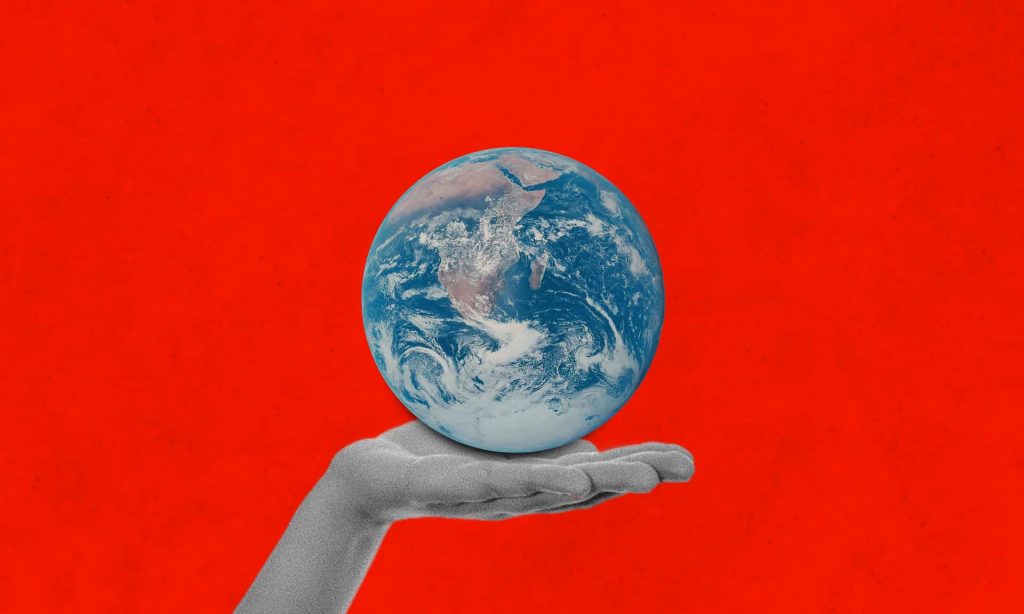
The political movement to unite the world is nearly one hundred years old. Most identify the Campaign for World Government founded in 1937 by Lola Maverick Lloyd and Rosika Schwimmer as the genesis of the movement. Since then the world has transformed in ways unimaginable.
Today, humanity is grappling with a growing pile of existential global challenges. Twentieth-century holdovers like poverty, inequality, human rights abuses, corruption, and the threat of nuclear war are now being complemented with an array of new challenges like the climate crisis, misinformation, and of course — the pandemic.
Our species is at a crossroads. We must choose between the two paths before us. The first path is to attempt to solve these global challenges within the current framework; to use the Westphalian nation-state to chip away at the symptoms of a systemic problem. The second path is to transform the system. To create an inclusive and accountable system of global governance in which humanity can come together and solve global challenges as one united political unit.
Uniting the world has of course already happened in many respects. This is why we have so many global problems. We have one global economy, one heating climate, one global public health, and (mostly) one internet. Yet, despite all of this globalization, we are politically divided. Divided by boundaries drawn by old men who — in many cases — died hundreds of years ago. It is time to overcome this political division and unify the species. Just as the economy, the climate, the public health, and the internet have been unified.
With a democratic world federation, humanity would have the tools to address global problems. I’m not saying the solutions would fall from the sky or that democracy on this scale is anyway an easy task. Exactly the opposite actually, world federation is of course the more difficult pathway than simply letting the nation-states do their best to solve problems out of their control.
Of course, as world federalists, we know all too well how difficult an endeavor this is. And we choose to fight for it not in spite of its difficulty, but because of it. Because we know that we are living in an era where the hardest option is the only one that’s going to work. Humanity has been taking the easy path for far too long and we are the unfortunate generation that has to get off the couch and into the trenches.
This is why young people around the world are joining the Young World Federalists, and why you all here today are members of UN-aligned. Because we know it’s up to us. It’s up to us to build a movement to transform the globe.
It’s up to us to speak to our friends, family, and neighbors about the need for human unity. It’s up to us to write articles, make memes, plan events, and lobby our local leaders to speak out in favor of global democracy.
As world federalists, we know that it’s up to us to lead humanity away from destruction and towards a peaceful, sustainable, and equitable future for all creatures on Earth. I’m so incredibly proud of our young volunteers, many of them high school students, who believe in themselves enough to join this movement. I’m inspired by our local organizers around the world who localize this grand vision and build communities of world federalists. I’m inspired by our partners and supporters who donate, collaborate, and promote this idea to others.
You all, the members of UN-aligned, are key players in this movement. Your work, writing and disseminating articles, producing audio and visual content, starting parishes, and recruiting others to the cause is essential. Just as Lola Maverick Lloyd and Rosika Schwimmer were fighting to save humanity from mass destruction in 1937, you fight because you know that a better world is not only possible but necessary.
As world federalists, we are driven by an intense mixture of fear, hope, and love for humanity that can only be described as grit: an unstopped and prolonged persistence towards a goal. We have grit because we know this is a big idea because we know that in spite of its necessity today, we may not live to see a world federation. We have grit because world federalists, since the beginning of the movement at the dawn of the second world war, have always fought against the grain. We have always pushed upstream and fought to change things that most people understand to be permanent.
Your involvement in this movement proves that you have grit, proves that you believe in something larger than yourself and that you are prepared to fight for it. It proves that you believe that people have more in common than difference and that you know overcoming ancient boundaries is necessary to secure our common future.
I’m honored to have the chance to speak to you all today and I’m very much looking forward to getting to know you all better. The Young World Federalists have several online communities which I invite you all to join and share what brought you to the movement.
Thank you once again to Ariana and Adrian from UN-aligned for organizing this meeting. If you’d like to learn more about the Young World Federalists you can go to our website at YWF.WORLD.
- Eston McKeague is the President of the Young World Federalists, a global youth movement building support for world federalism and global democracy.
- The following speech was given at UN-aligned’s first Annual General Meeting conference.
Social Media in an Era of Invasion
By Kaitlyn Rivera
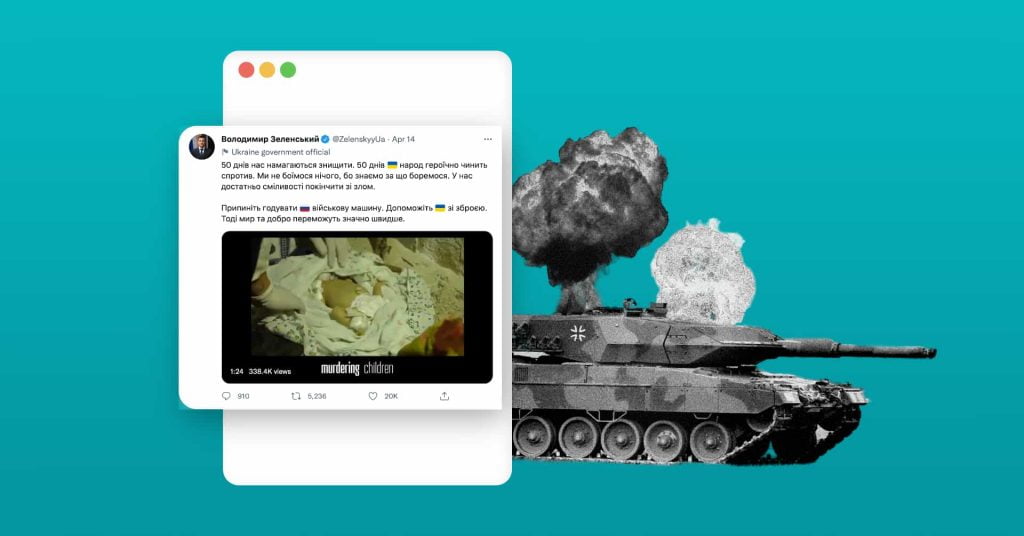
In a time of uncertainty and fear, Ukrainians are using social media to stay in the world.
From February 24th until now, nearly tens of thousands of people have been either injured or killed by the Russian invasion of Ukraine. This is an unfortunate number of people, especially so when considering the number of refugees fleeing Ukraine; with more than five million leaving Ukraine in search of safety. The people of Ukraine have been pushed from their homes, forced to leave behind their lives, families, friends, and pets; but they are resilient people and have given the world personal insights to life in Ukraine post-invasion.
It seems that no matter what social media platform is opened, it is deeply saturated with countless stories about the Ukrainian people and the Russian invasion. This event has exposed many people for the first time to images of a large-scale attack by a country like Russia against a European country like Ukraine. There are aggressor countries and those that are attacked; in this situation, Russia is the aggressor. This historical event has come with varying news reports, rebuttals, and denials; all a part of social media, which is many people’s main source of news.
Some will argue that social media cannot be qualified as a news source due to the biases that people carry with them, but biases are nearly unavoidable, especially in international interactions like this one. Media platforms are designed to benefit the users that are currently experiencing whichever event is being highlighted in the news, and in this case it is the Ukrainian people and their lives during this tumultuous onslaught of their country.
Social media is being utilised in many ways by the people of Ukraine to share their experiences; making TikToks about displacement and fear, sharing personal experiences on Facebook and Reddit, and using Instagram to publicise photos of the devastation. This attack is completely altering the lives of the Ukrainian people, just as Russia’s intervention is affecting the lives of the people of Syria. Throughout history, the people’s experiences were not shared until afterwards, and sometimes not at all, but this is a different set of circumstances in our modern world.
Social media platforms like Facebook, Twitter, Instagram and Tiktok are sources that people all around the world use to gather information. When a major event happens, even if one may think it has nothing to do with them, they will more often than not still seek information on it.
Since the invasion of Ukraine, the world has seen an upward trend in social media as a way of sharing personal experiences. Previously, in situations like this, personal stories were shared post-event in autobiographies or biographies, but in 2022, the instant gratification we get from social media is being used to the advantage of the Ukrainian people. The Ukrainian people, despite countless waves of oppression, have managed to mould this massive tool into something that benefits them and sets a trail for other countries to do the same. This is something that could continue as long as countries are being wrongfully invaded.
Should we believe everything we see online?
Social media is a huge part of our world; it has the ability to alter every situation we encounter in life, and on a global scale, this has echoing repercussions. Spreading false information, lying about personal struggles, and confusing audiences with inaccurate information can all be extremely detrimental to the efficacy of social media as a whole.
Censorship is a huge loss of power for the general population in any country; Russia is a country that has a lot of power to do virtually anything it pleases to its people by manipulating the information it divulges. It is astonishing that it has the ability to censor so many people, not only in Russia but also in other countries.
The world needs ways to stay connected and get the right information. People, as individuals, need ways to share stories and experiences, even if they may not always be positive, because these stories have the ability to change history.
Doris Lessing: subjecting a divided civilisation to scrutiny
By Alex Liberto
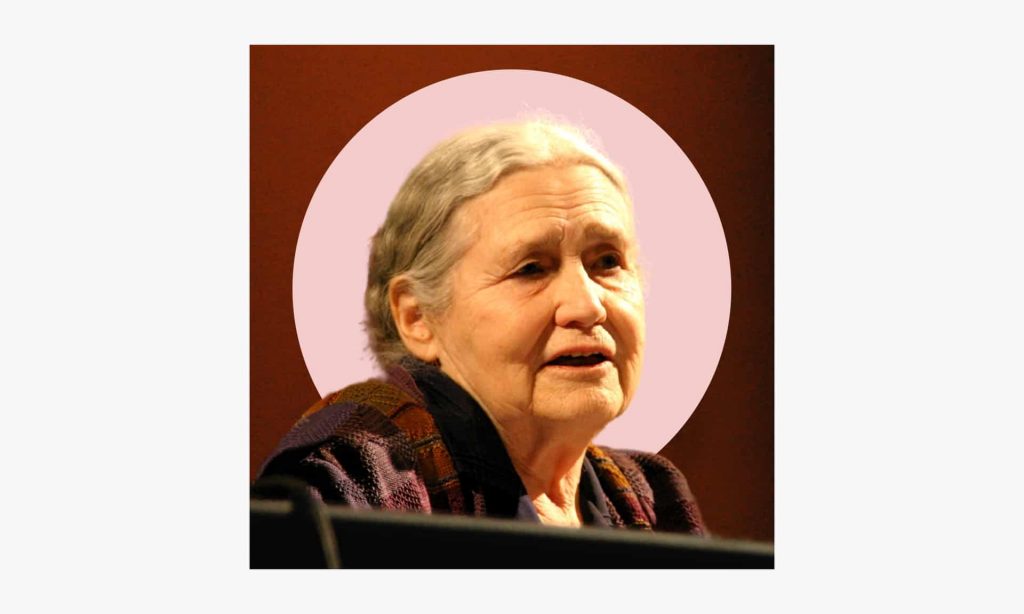
In this issue I would like to introduce our readers to Doris Lessing, a female writer who weighed in on the feminist front and who wrote about persecution, intolerance and injustice.
Doris Lessing was born in Iran on the 22nd of October 1919 to Alfred Cook Taylor and Emily Maud McVeigh. Her parents were both very involved in the Second World War. Her father was an active fighter and her mother was a nurse. It was in this capacity that Emily Maud met Alfred, who had been seriously injured in battle. His leg was, in fact, eventually amputated.
Doris Lessing spent the first six years of her life in Tehran, where her father worked at the Imperial Bank of Persia. After a brief return to England the family moved to Zimbabwe, which was then known as Rhodesia. There, Alfred invested all his capital on a 3000 acre farm which he hoped to develop. Life in southern Africa was to leave an indelible influence on Doris Lessing’s existence and on her written work. The distinct differences between Lessing’s parents were also a significant influence on her as a writer. Her father was a visionary dreamer who strove for freedom from social commitments and community rigidity, while her mother was more pragmatic and down to earth. Much of Lessing’s work describes these psychological differences between the visionary and the practical, the dreamer and the realist.
Although Doris Lessing was sent to a very good public school, she was not a brilliant student and by the age of fourteen she decided to leave school to attend secretarial college, where she learnt typing and shorthand. Lessing was very successful in the working world and after fruitful experiences with various companies she was employed by the Rhodesian Parliament.
Lessing married twice and both marriages ended in failure. Her first husband, Frank Wisdom, was a civil servant. The couple had two children before their divorce in 1943. Her second husband was a German Jew who had escaped from persecution to Rhodesia. With this man, called Gottfried Lessing, she had one child. Their marriage ended in 1949. Disillusioned by these events she decided to leave Rhodesia in 1949 and go to London where she settled. The following year she published her first book entitled The Grass is Singing, which she had written in Rhodesia. From then on Lessing dedicated her life to writing, and to an incessant search for intellectual and political fulfilment.
A few years before her death in 2013, Lessing was awarded the 2007 Nobel Prize for Literature. In awarding the prize, the Swedish Academy described her as “that epicist of the female experience, who with scepticism, fire and visionary power has subjected a divided civilisation to scrutiny”.
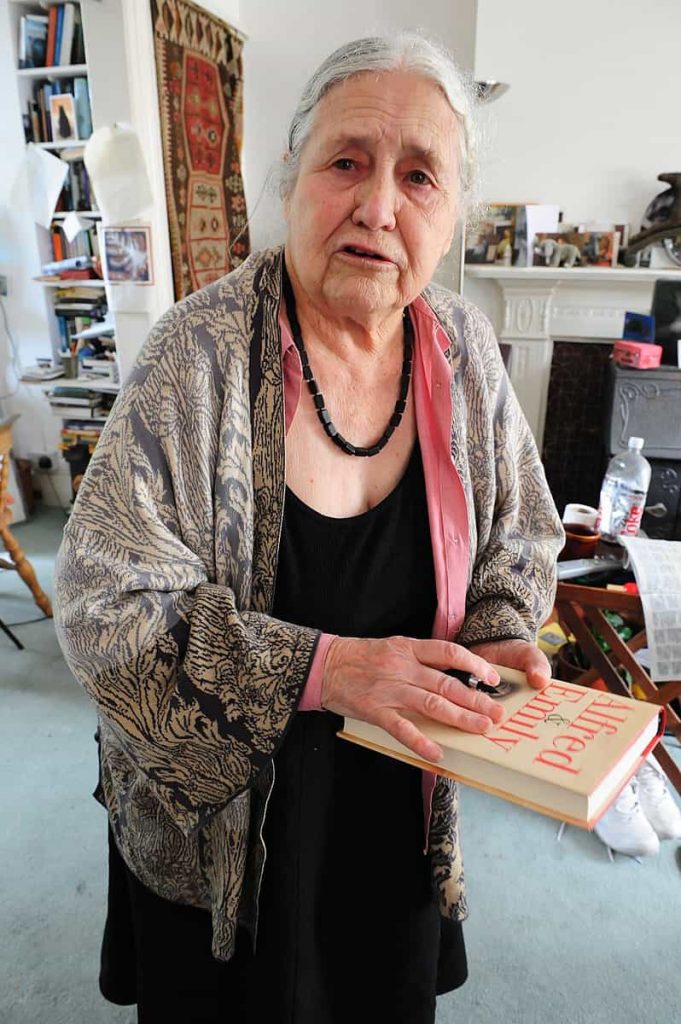
Literary Career
Doris Lessing’s first novel, The Grass is Singing, was published in London in 1950. The book, which had been written in Rhodesia in 1948, was very well reviewed by the literary critics in England, a fact that spurred Lessing to continue her career as a writer. The novel deals with colonial life and the situation of the black Africans, whom Lessing identifies as the real exiles. The fate of the black Africans and of the less privileged, like the Jews, Indians and non-whites in general, was very dear to Lessing. Even her following book, Martha Quest, published in 1952, focuses on the inequity of a society that favours one race rather than another. She felt that the colonial settlers were completely unaware of the real situation of those who were not like themselves. She even focused on the basic class differences that the settlers imported from their so-called civilised country of origin. Class distinction together with racism formed an intense fertile ground for prejudice and intolerance. Martha Quest was the first novel of a five-novel sequence called Children of Violence. The other four novels were entitled A Proper Marriage (1954), A Ripple from the Storm (1958), Landlocked (1965), and The Four-Gated City (1969).
In 1962 Lessing published a novel that put her in the limelight of the Women’s Liberation Movement. The book, entitled The Golden Notebook, focuses on a woman’s quest for self-determination and fulfilment, with particular attention to her relationship with her partner and with society in general.
In 1971 Lessing published Briefing for a Descent into Hell , which was an interesting experiment in, as she put it, “Inner-Space Fiction”. The novel opens with a situation that sees a patient at the Central Intake Hospital who is trying to be identified. Nobody knows who the individual is, nor where he comes from. As Roberta Rubenstein points out in her critical study, The Novelistic Vision of Doris Lessing, the author represents “Everyman, rediscovering (remembering) through the exploration of the microcosm of his own consciousness the experience of the human race”.
The 1980s saw the publication of the series Canopus in Argos: Archives. This work includes: Shikasta; Marriages Between Zones Three, Four, and Five; The Sirian Experiments; and The Making of the Representative for Planet 8. Doris Lessing wrote “I would like it if reviewers and readers could see this series, Canopus in Argos: Archives, as a framework that enables me to tell (I hope) a beguiling tale of two; to put questions, both to myself and to others; to explore ideas and sociological possibilities.”
Other novels written in the 1980s which are worthy of mention are The Sentimental Agents, and The Diary of Jane Somers: The Diary of a Good Neighbour (1983) and If the Old Could (1984). Through these novels, Lessing studies individuality once again. As early as 1957 Lessing had written: “One sees man as the isolated individual unable to communicate, helpless and solitary”. In 1985 Lessing published The Good Terrorist and in 1988, The Fifth Child. Although her most recent novels are full of intense and profound studies that explore the intimacy of relationships and inner turmoil, her best novels are her first, in particular The Grass is Singing and the Children of Violence series.
Doris Lessing is also well known for her excellent essays. Her best can be found in the collections A Small Personal Voice (1975) and Prisons We Choose to Live Inside (1987).
Style and Themes
Doris Lessing has been enthusiastically studied since the 1960s when she gained a high reputation especially for her political preoccupations and her involvement in the Feminist Movement. She had become interested in politics when she was still in her teens, favouring Marxist theories and actually joining a Marxist group. When she lived in London, Lessing was actively campaigning against nuclear weapons and joined the Campaign for Nuclear Disarmament. She also wrote for the Communist magazine the New Reasoner and visited the Soviet Union. Her earlier novels reflect her political commitment in that they focused on the unfairness of society, especially regarding class difference and racism. The situation in Rhodesia in the 1950s and 1960s was a practical example of how racial superiority and class distinction joined forces to create an unjust and prejudiced society. Lessing best portrays this situation in her Martha Quest novels, in which she speculates on a utopian world of equality and integration where one can see “the blue-eyed, fair-skinned children of the North playing hand in hand with the bronze-skinned, dark-eyed children of the South”.
Lessing’s political commitment gradually waned as the Soviet Union grew with threatening colonial dreams of grandeur. Lessing resigned from the Communist party after the Russian invasion of Hungary in 1956.
From this point on, Lessing shifted her attention from society to the individual, in particular to the situation of women and their relationship with men. She was not really interested in stereotype feminism. Hers was a far deeper study into the inner turmoil of women and their aspirations of fulfilment and self-awareness.
Although her earlier works are certainly the most important, her later works touch such topics as sufism (a muslim mystical cult), science fiction and insanity. These subjects are all treated with great skill and dexterity. Lessing’s greatness lies in her ability to respond to the restlessness of her times and to the tensions between the visionary and the ordinary; the world of dreams and the world of practical reality.
How to approach art: A lesson from Doni Tondo by Michelangelo
By Carla Pietrobattista
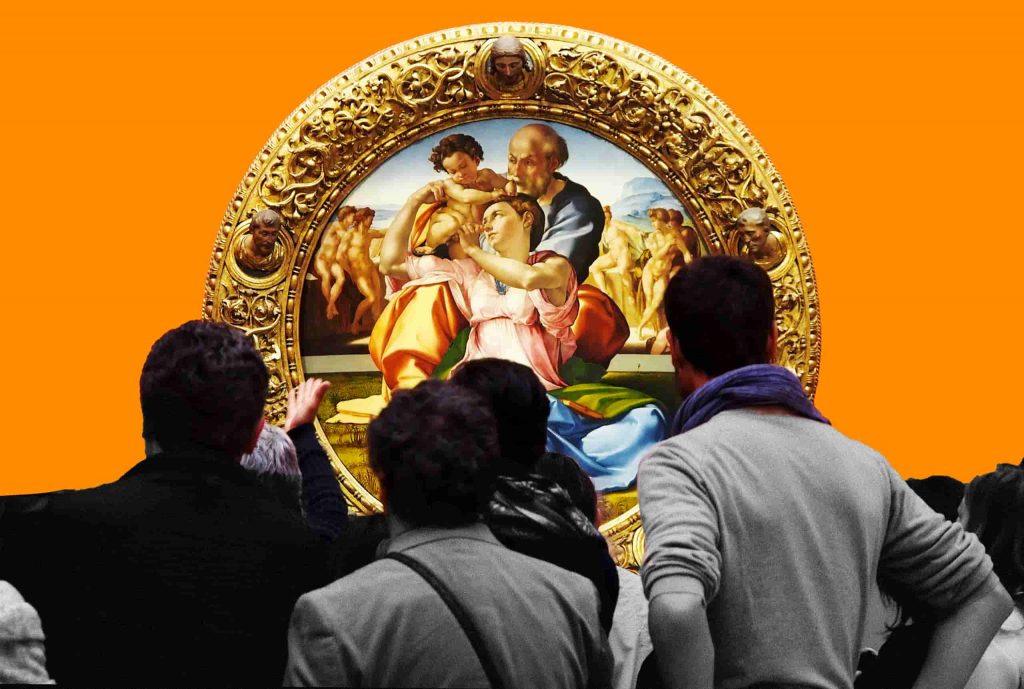
Located in the gallery of Uffizi, Michelangelo’s Doni Tondo (Tondo Doni) portrays the holy family and represents a unicum in Michelangelo’s artistic production.
Read this article in Italian →
In front of real people, I would never admit that I like to be right. In front of a keyboard, on the other hand, it is easier for me to admit that when I am right, my ego feels a subtle pleasure; one which is obviously disguised as false modesty. Perhaps it is precisely the search for this sensation that leads me to talk about a work, whose dynamics of realisation confirm my idea of how we should approach art: the Doni Tondo.
To achieve my goal, I will start from the stylistic and historical examination of the work, and then arrive at completely personal and subjective considerations.
Doni Tondo Michelangelo analysis
Michelangelo’s Doni Tondo was created between 1505 and 1507 by Michelangelo Buonarroti. Although the artist was still young at that time, he had already completed some of his most important works, which had been received with great enthusiasm by both his clients and the general public alike. This was a perfectly balanced period in Michelangelo’s life, because the enthusiasm of personal success was added to the dynamism of a young age and the awareness of his own abilities and talent.
The Doni Tondo is a tempera painting that represents an unicum in Michelangelo’s artistic production because it is the only work attributed to him with certainty that is made on a mobile support.
What does Tondo mean? The term tondo is obviously linked to the circular shape of both the work and the frame that encompasses it. The wooden surface of the frame enhances the beauty of the painting because it is conceptually connected to it. In fact, although it was made by the hands of Marco and Francesco del Tasso, it was executed according to a design by Michelangelo himself.
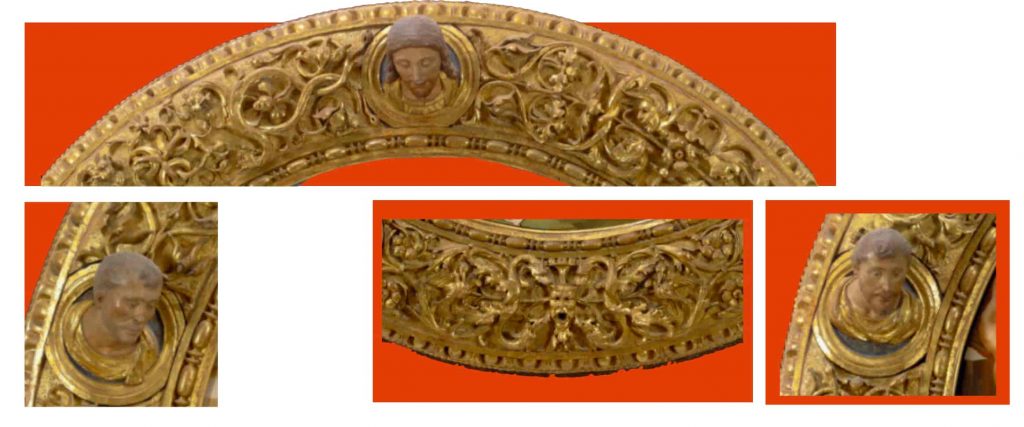
Who are the five heads on the frame? The frame, decorated with intertwined plant racemes, animals and satyrs, has a surface that we could almost define as three-dimensional because in addition to the elements just mentioned, it includes five small sculptures: five heads that protrude from the base of the support. These heads represent Christ with prophets and sibyls; their pose and position makes it seem that each of them observes and participates emotionally in the scene depicted inside the tondo.
The painting depicts the holy family in the foreground as its members are the main protagonists of the work, while in the background we see a young Saint John the Baptist with further intriguing characters placed behind him. The theme of the holy family in a historical-artistic context such as the one we are examining was quite common at the time. In fact, we must not forget that the works of the past, as regards the choice of subjects to be created, were mostly divided between representations of religious virtues and representations of the civil virtues. Yet Michelangelo’s interpretative reading of this decidedly common theme is completely original and offers us new insights and philosophical perspectives that give us the feeling of never having seen other paintings of this type.
Painting ennobled by the conceptuality of sculpture
The first “technical” observation linked to tondo reveals, simply by looking at the figures, what Michelangelo’s belief was about painting. According to the artist, the subjects depicted in the paintings had to be made following the same preparatory criteria as the sculptures, with the same meticulous attention in the reproduction of details, especially the anatomical ones. In a certain sense, painting had to be “ennobled” by the conceptuality of sculpture in order to reach and equal the perfection of the art of removing. This detail can be perceived immediately, simply by observing the central group of the scene, where the perfect twist of Mary’s body, depicted in the foreground, suggests the idea of tension and movement typical of the bodies of all Michelangelo’s sculptures. Behind her to complete the expression of perfect and harmonious formulation, we find Joseph holding Jesus on his lap. The strength and muscular tension, much sought after by Michelangelo in his sculptures, are obtained not only in the drawing of the anatomical details, but also through a wise use of chiaroscuro.
In the tondo the subjects are illuminated by a light that starts from the left and spreads on the surface of the painting, illuminating the bodies and the drapery that surround them with varying levels of intensity. The colours of the garments, thanks to this diffusion and inclination of light, reach not only a unique intensity and liveliness, but also the perfect depth much sought after by the artist, obtained above all thanks to the unique chromatic harmony imagined and then created by him. Light is the key and the secret through which Michelangelo not only obtained unexpected chromatic shades, but also the element through which he was able to play to present the individual elements depicted in an impeccable perspective.
What makes Michelangelo’s Doni Tondo such a memorable work?
After these necessary clarifications, certainly fundamental in the study of the history of art, I can finally put aside the more technical and formal language and proceed to say what I think and what made the study of this work not only enjoyable, but one of the most memorable works of this lively historical period.
Surely the refined beauty of the drawing is the reason that pushes one to observe and remember this masterpiece, but appreciating the beauty of the painting itself is not enough to grasp its essence. Michelangelo is the man whom I consider foremost amongst those of the renaissance who possesses a thirst for infinity, because in him in particular I find the idea of centrality of being.
Moreover, I clearly perceive the perfect search for beauty and its essence, typical of the classical period. In every gesture, first thought out and then reproduced, Michelangelo gives us through his art, much more than what we see. In fact, he tells us stories that are not limited to presenting individual subjects but also the knowledge connected to the subjects themselves. In him the best elements of art and culture merge. Examining each of his works is like reading the summa of theology, philosophy and the study of the anatomy of time, with the constant feeling that the work of art examined is not only the culmination of the perfect artistic gesture, but the point of arrival of a story that finds fulfilment and realisation in it. Hence, the group of the Holy Family is not only the idealistic and idealised representation of the family, but is also the point of arrival of the expectation of all humanity, obviously interpreted from the Christian perspective in which Michelangelo moved.

Symbolism in Doni Tondo (holy family)
The smallest group of nude figures in the background is a symbol of humanity before the birth of Christ, therefore we are talking about a humanity not yet involved in the destiny of salvation reserved for man after the coming of Jesus. Precisely for this reason the subjects depicted are naked; a nakedness, mind you, that is not deformed by sin like the damned souls of the last judgement. Here, men who are not clothed with the message of salvation typical of the Christian mentality and, precisely for this reason, naked, as Adam was when he became aware of himself. They are cultured men, perhaps, enlightened by ancient philosophy, but naked nonetheless because they are enlightened only by classical philosophical thought.
On the right a St. John contemplates the holy family. The presence of the Baptist is much more than a decorative element to balance the global development of the image, here it becomes a symbol of the end of the messianic expectation and the fulfilment of the divine promise. John is the last of the prophets, the only one among them to have seen with his own eyes the fulfilment of the ancient promise made by God to man.
Radiating perfection
Absolute perfection is obviously achieved in the central group where the beauty of the bodies depicted is very different from the perfection of the nudes behind them, because it is a perfection clothed with dignity and awareness, where the certainty of being the fulfilment of an expectation is symbolised in the choice of every single pose, but also and above all in the closed book on Mary’s lap. Many have seen in this closed book only the text announcing the Passion of Jesus to Mary, but I see it rather as the symbol of the closure of a process of waiting, completed by two “yeses”: those pronounced by Joseph and Mary, protagonists of the scene with their child. This was a mission that was initially foreign to them, but which they accepted and therefore completed. The chromatic choice therefore in the case of the central group is no longer just a stylistic means, but it is also another means to arrive at the aim of emphasising the whole conceptual construction of the scene.
My approach to the study of Doni Tondo is not only purely philosophical and conceptual, as it might seem from what has been said so far, but it is also extremely practical and it is precisely for this reason that I am able to talk about the small details of the drawing and remember this work. The Tondo in fact, both in the choice of subjects and in the shape, is the result of an artist’s response to specific commission needs.
Agnolo Doni
Agnolo Doni, cited as commissioner of the work by Vasari, asked Michelangelo to make a painting as a gift to Maddalena Strozzi, married to Agnolo in 1504. The occasion triggering the realisation of the work was either marriage or, holding account of the presence of the Baptist, the need to celebrate the birth and baptism of Mary, the firstborn of the couple, in 1507. Both significant dates therefore justify the choice of the subject and, as we shall see, the reason for the choice of the form. Motivation and form are also the two elements that inspire my intervention in this specific case, because they confirm my basic idea of the right approach to the study of art. Each work, to be truly understood and internalised, must be inserted in the social context to which it belongs, because every artistic production is not only the result of a specific artistic style, determined by the historical period, but is the direct consequence of the social reality and general culture in which the work was conceived. In a society as strongly permeated by religious thought as that of the Renaissance, it is obvious that the birth of a family was celebrated by choosing the Holy Family as a reference model.
The purpose of marriages in the past, leaving aside the romantic ideas about love as we understand it now, was to generate new children, who represented the continuity of one’s family of origin and, in many cases, the guarantee of an adequate workforce. In the case of marriages between nobles, such as the one between Agnolo and Maddalena, the children were also the element that sealed a new “alliance” between wealthy families.
Taking into account all these clarifications regarding the importance of children, I can finally start talking about the particular rounded shape of the painting. The tondo was not an absolute novelty in the artistic production of the period, but this tondo is different from the others because it is a desco da parto, a sort of round tray often painted on both sides, used by noble families to serve food to women, who had just given birth. This identifying element of the work fully justifies both dates proposed by historians, because if given on the occasion of the wedding it would be a wish for prosperity, if given on the occasion of the birth it would be a means of celebrating the happy event through the continuation of a habit.
The Doni tondo therefore, regardless of the moment and the reasons for its realisation, would not have been made if this social habit had not existed. This is why it is easy to remember the various elements of the Doni Tondo, because regardless of its evident beauty, it is connected to a tradition and contains a story. This allows us to understand and internalise the piece and not just learn sterile technical data.
The essence of art appreciation
I remember with horror and disdain my examination of Mediaeval Art History. I had carefully studied all the parts of the immense programme, trying to memorise the various dates so loved by my professor and reconcile them with my desire to understand the reasons behind the artistic manifestations of the period. With the usual emotion mixed with anxiety, I sat in front of my professor waiting for the fateful first question and I was asked the date of birth and death of Robert Guiscard, a character who is remembered as a condottiero, not as an artist. I only managed to indicate the historical period in which to insert him and alas I failed the exam. At the next exam, I presented myself with a completely different approach, let’s say in calculator mode considering how many numbers I had in mind. After many years, of these numbers, of these dates, I remember absolutely nothing. On the other hand, I perfectly remember every single detail of the subsequent art studies, of the Doni Tondo and of all those wonderful works that I made my own, because I was able to understand them and contextualise them.
June Quiz
By Katha Wüstnienhaus

Take this month’s Gordian quiz by clicking on the link below.

